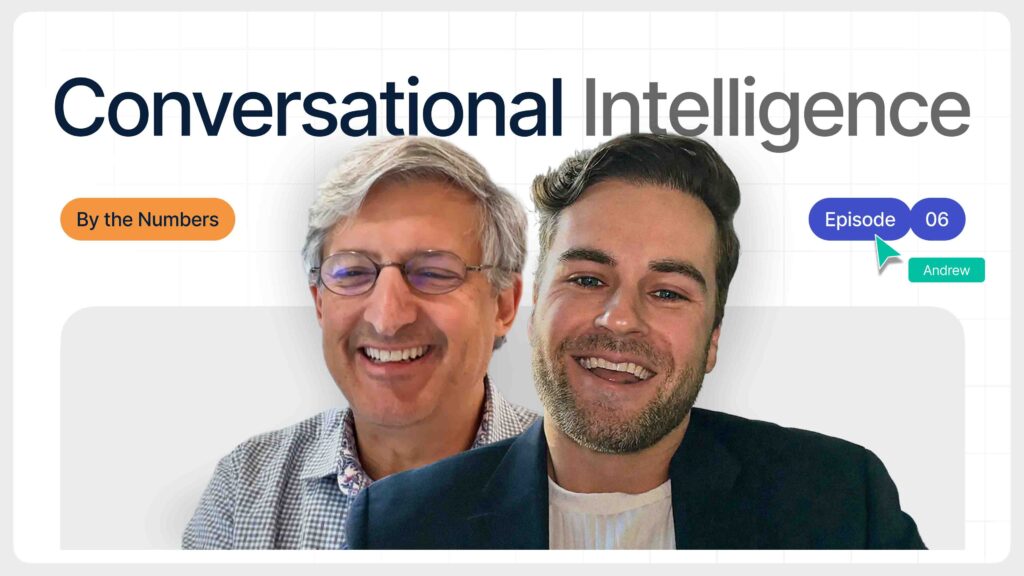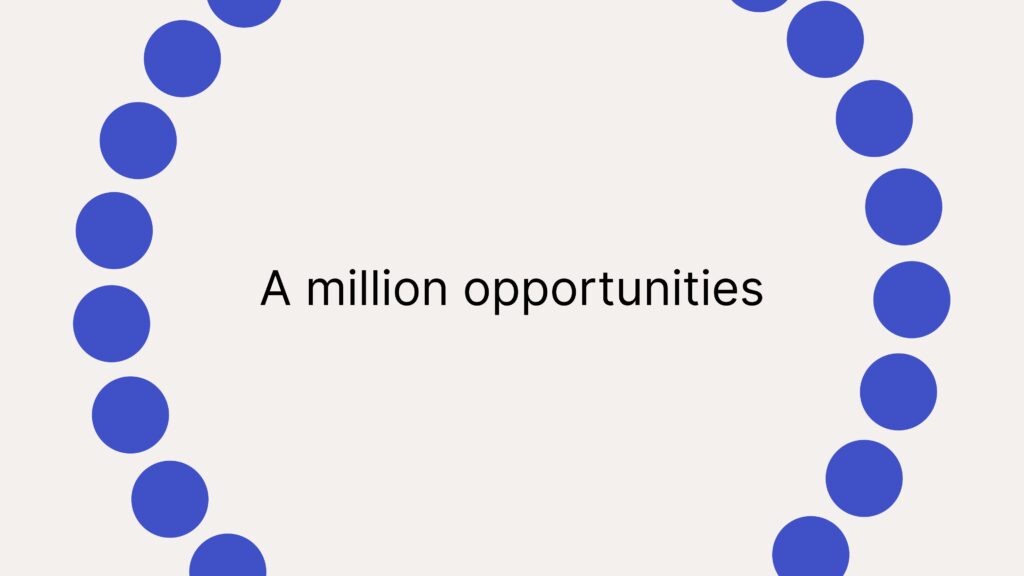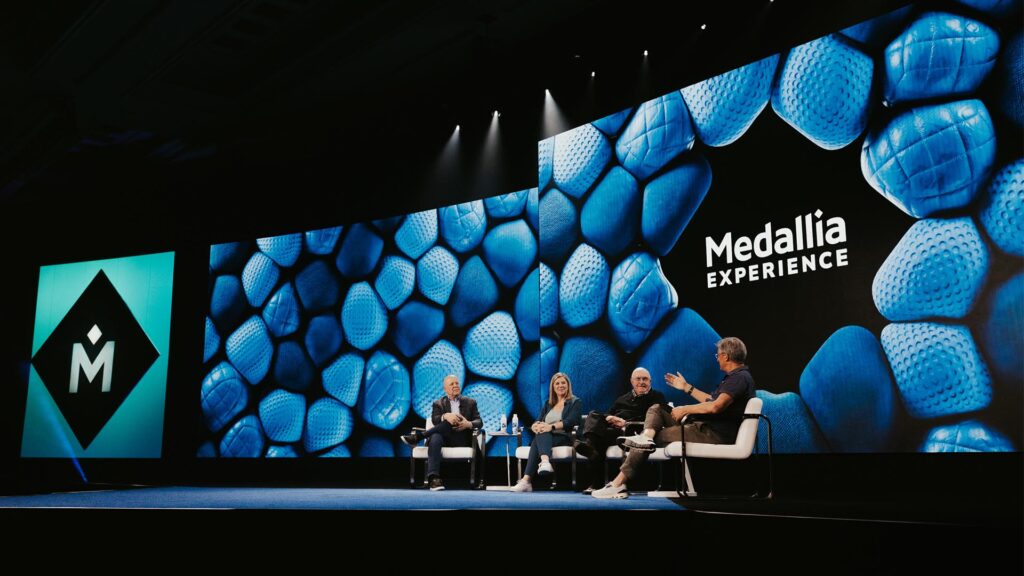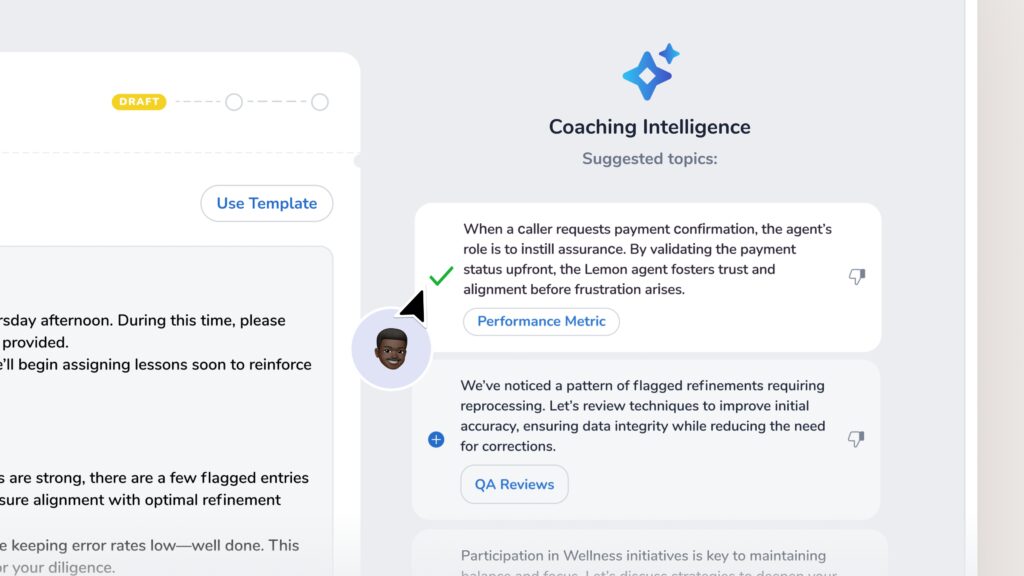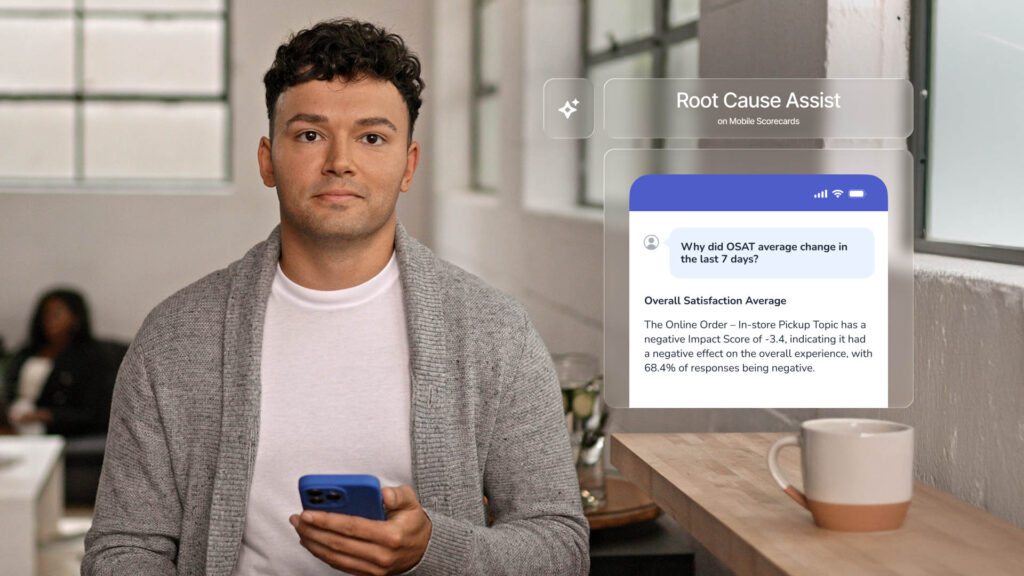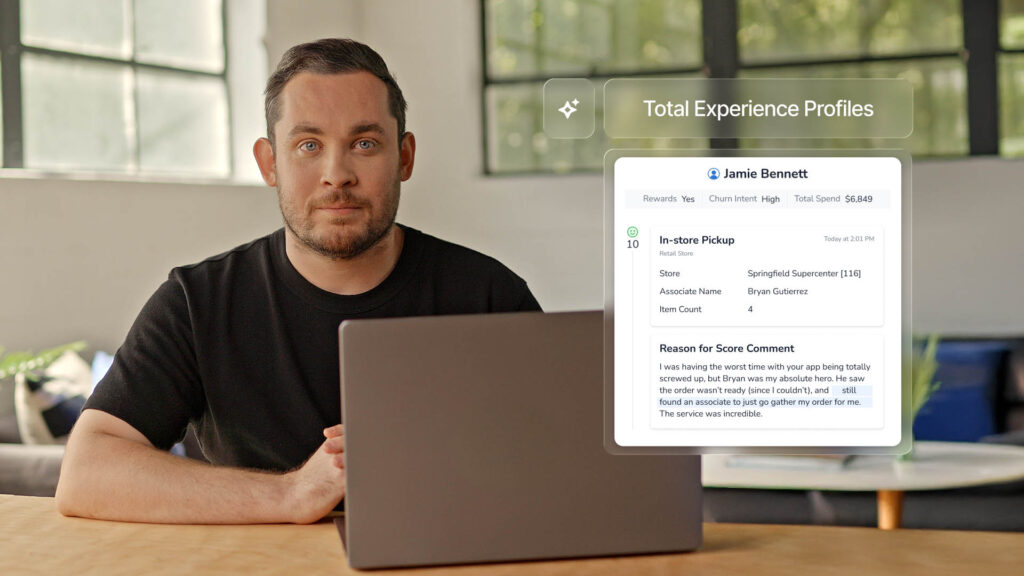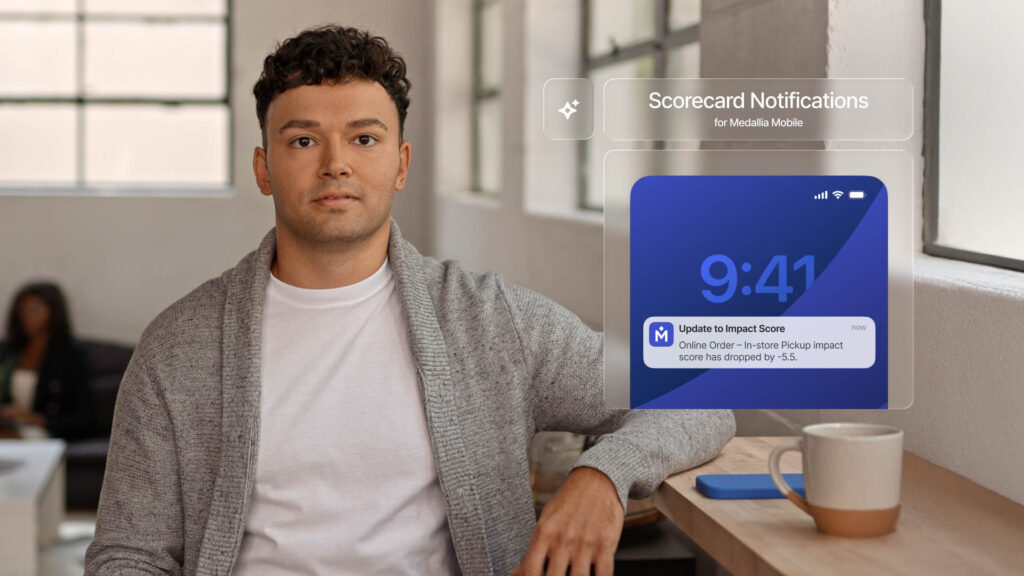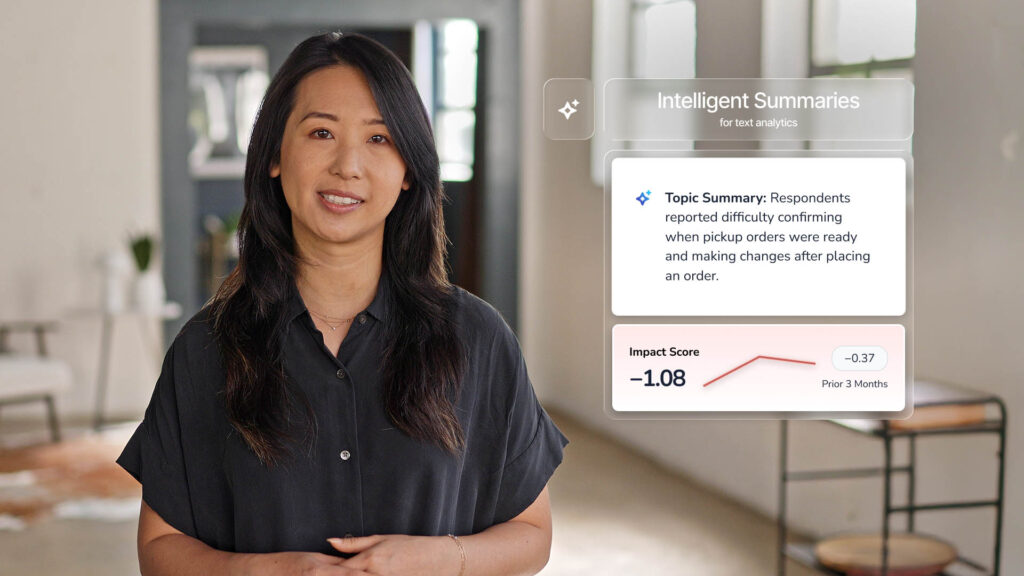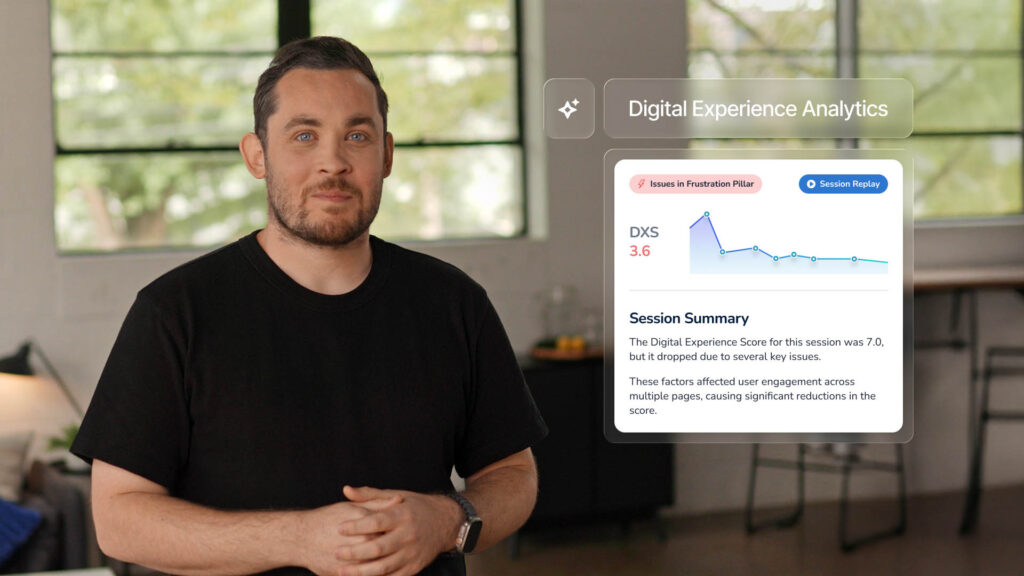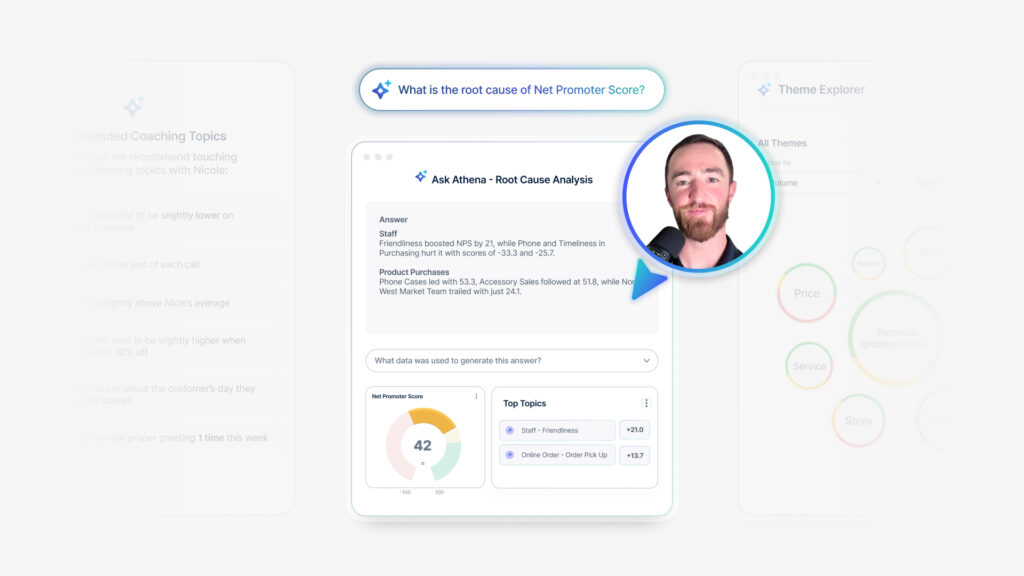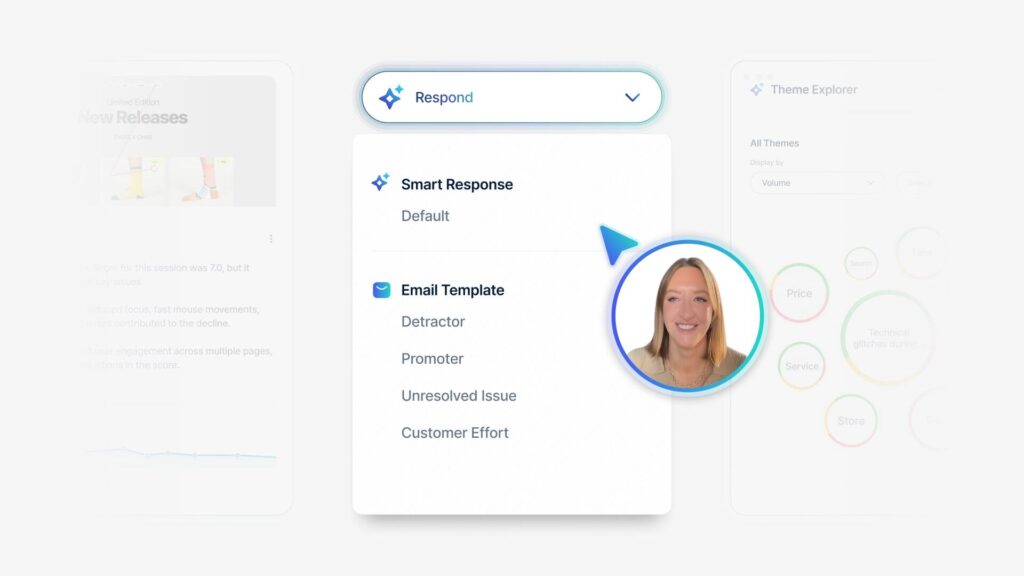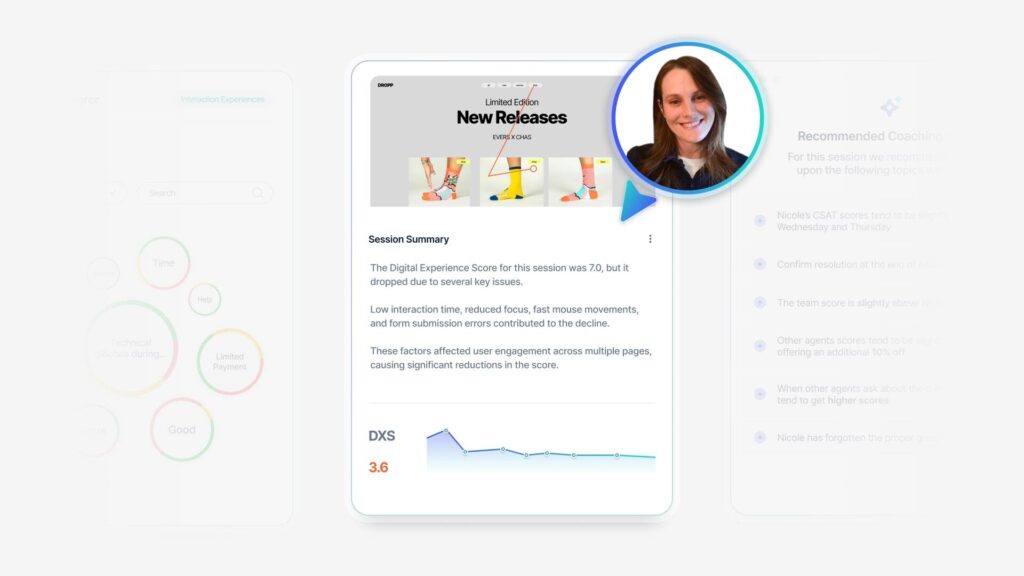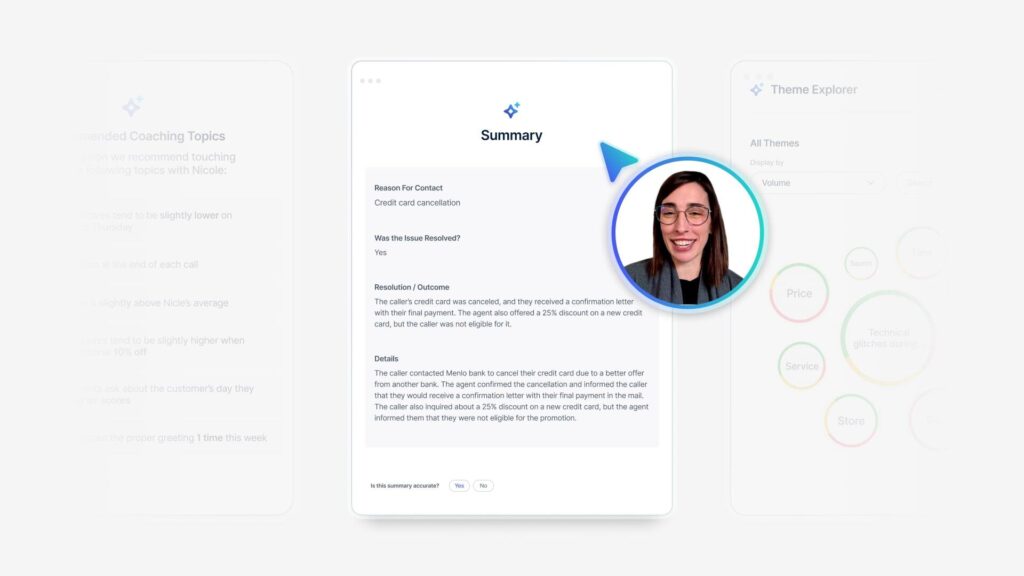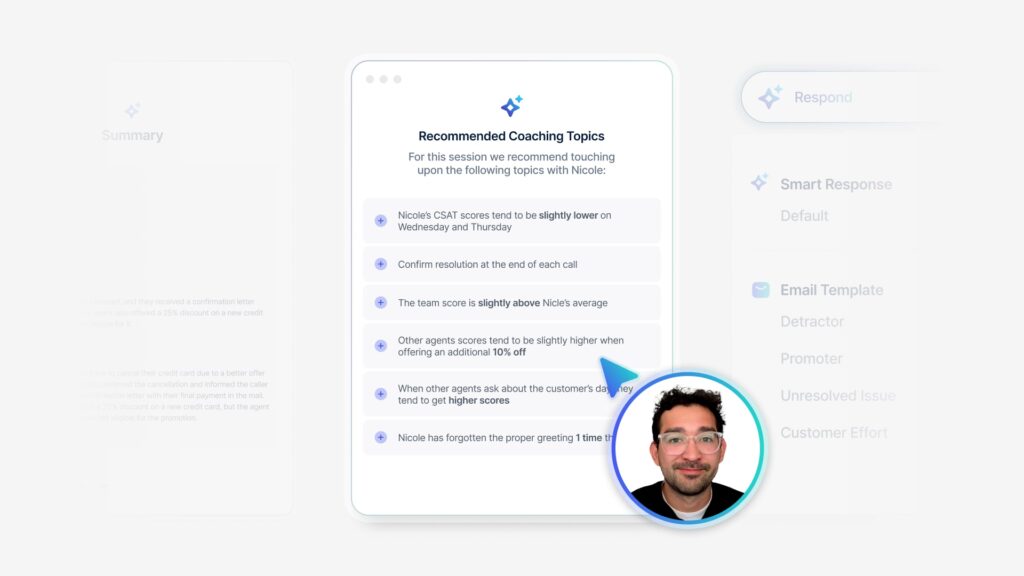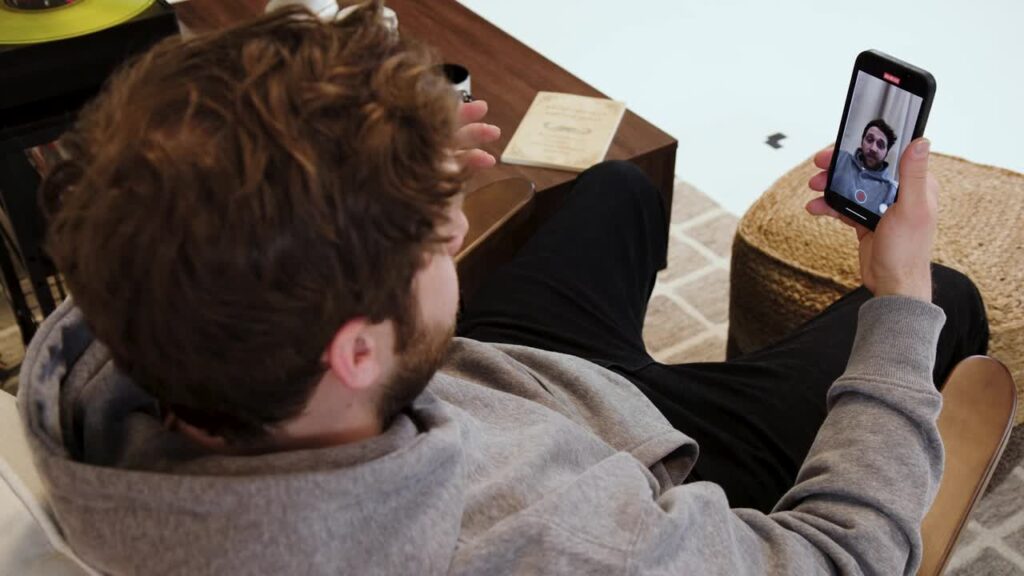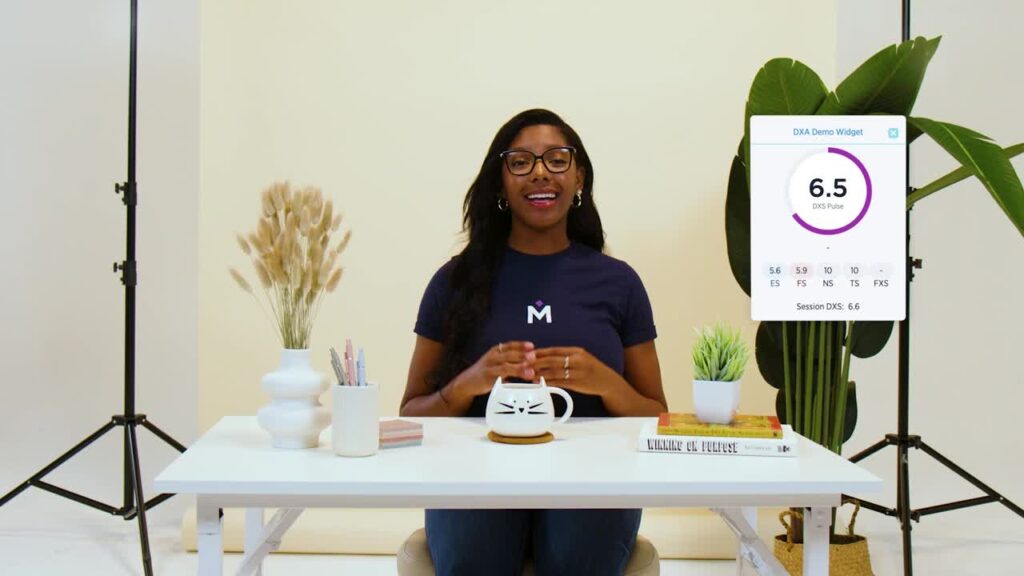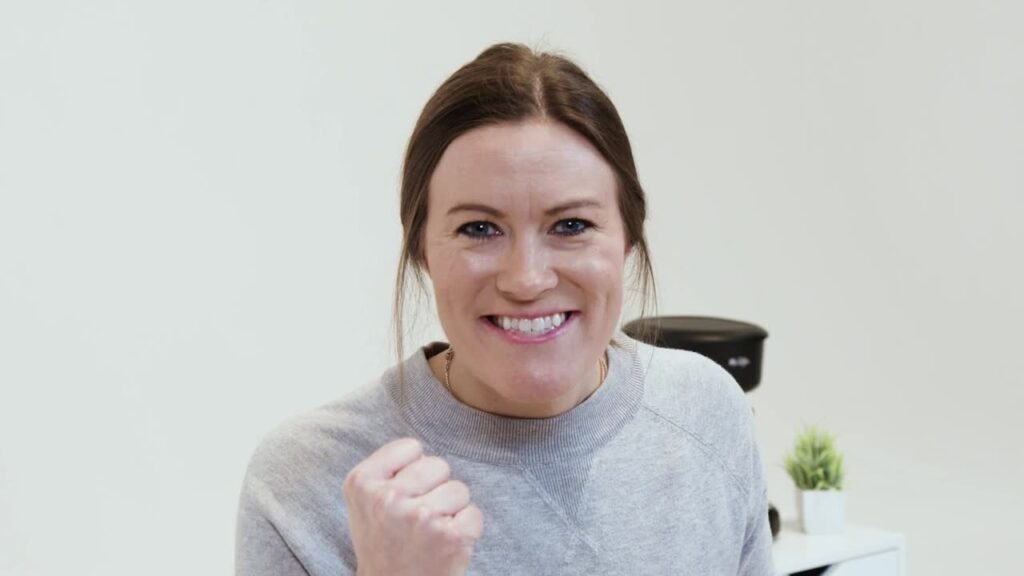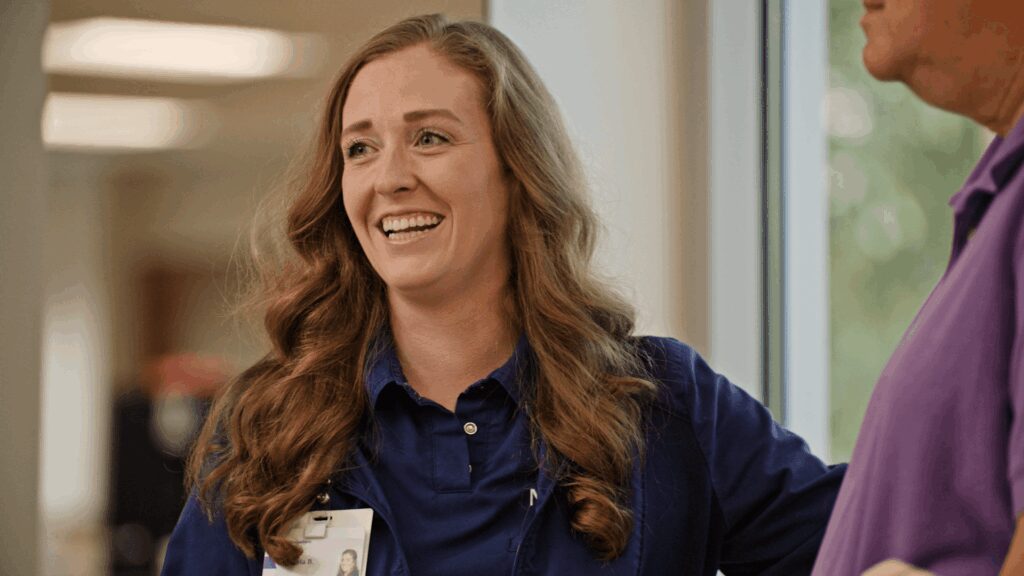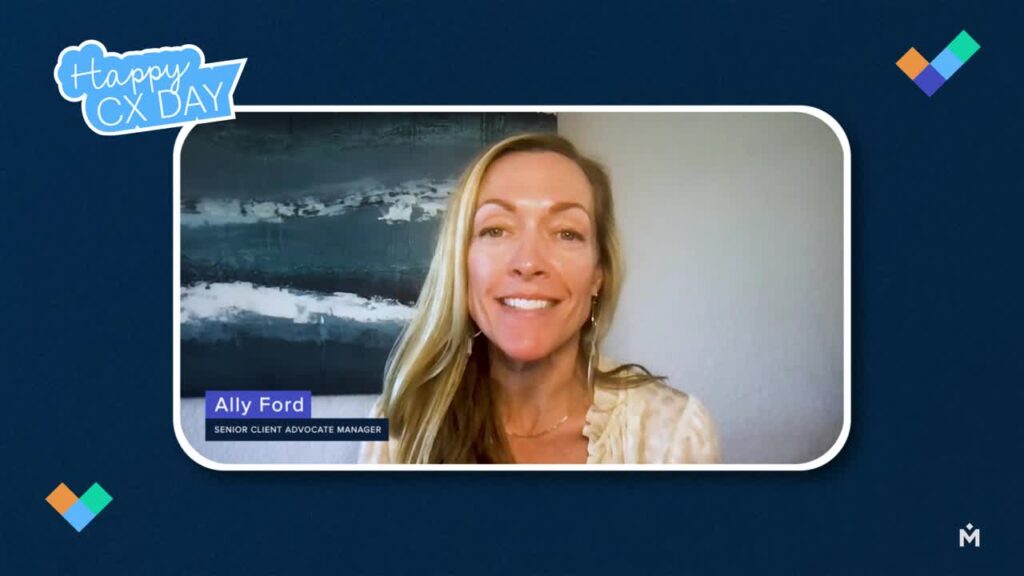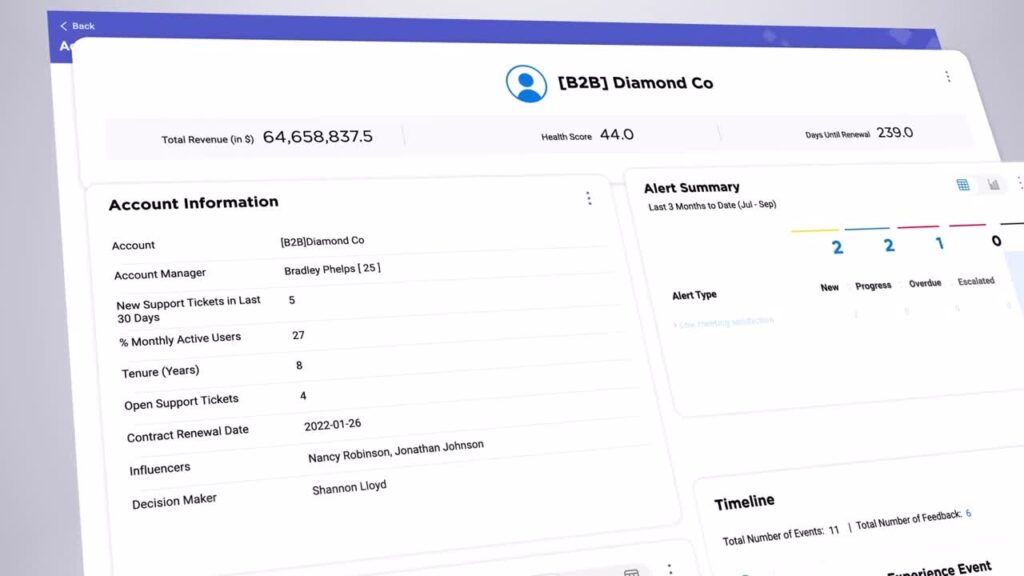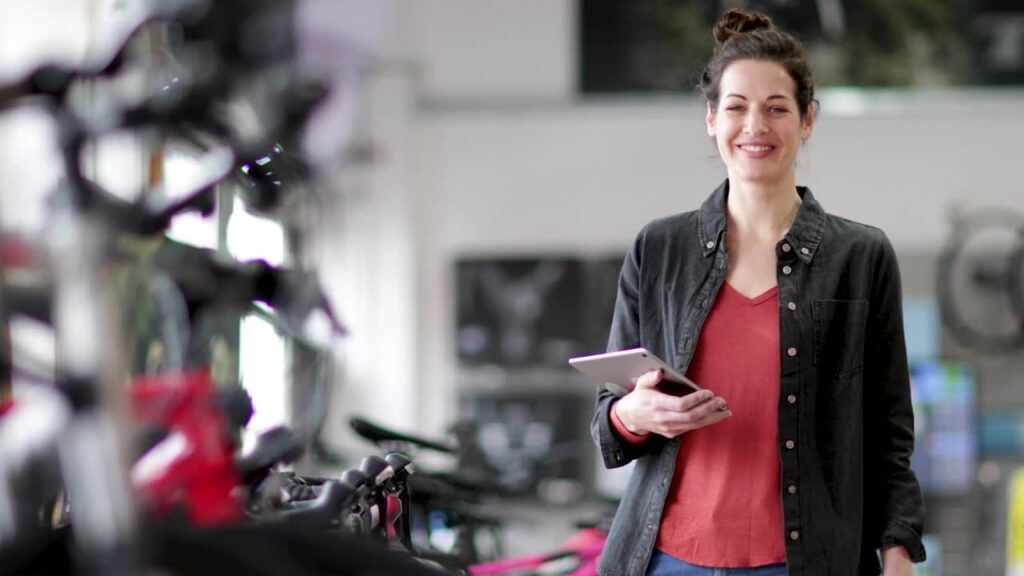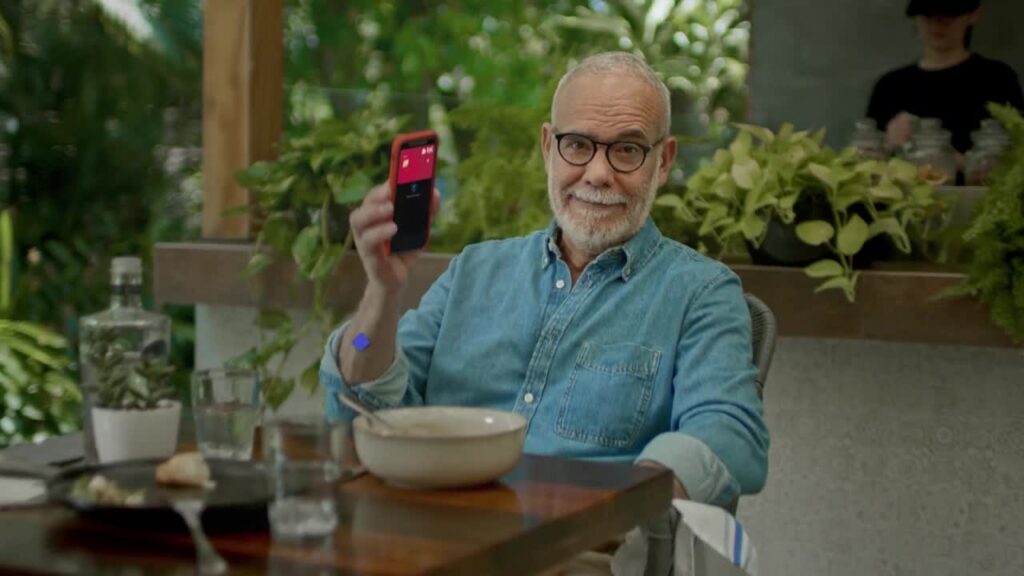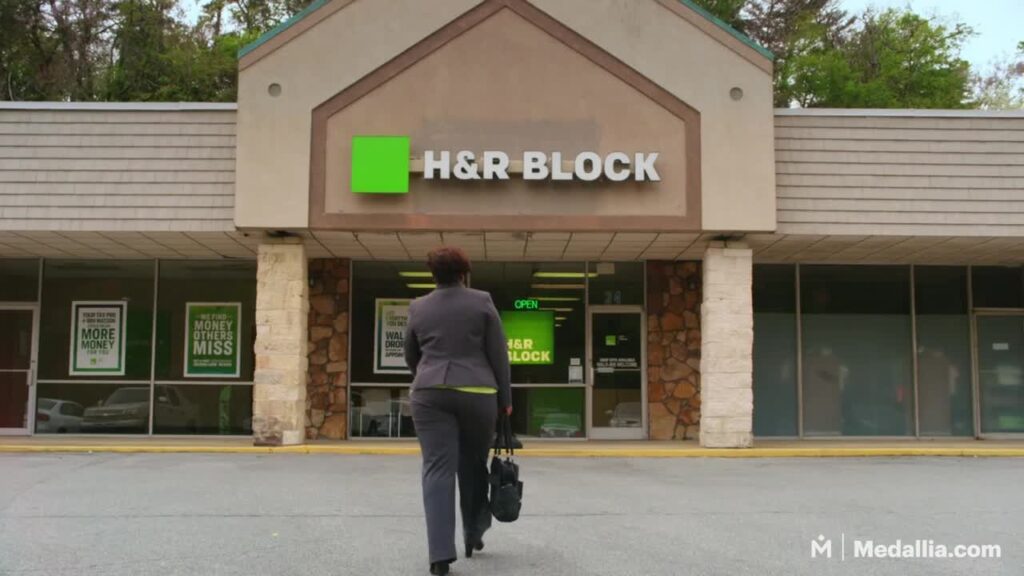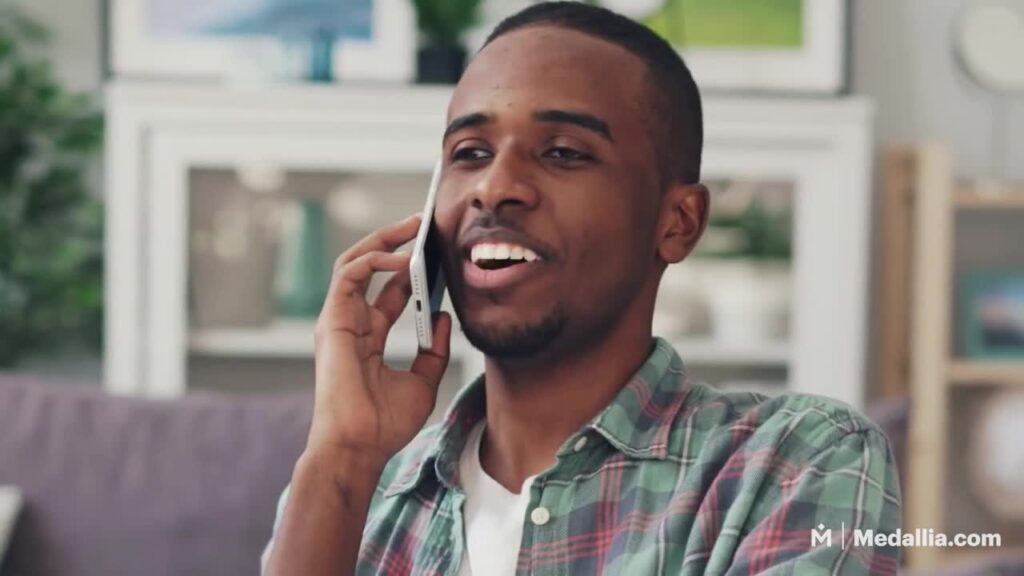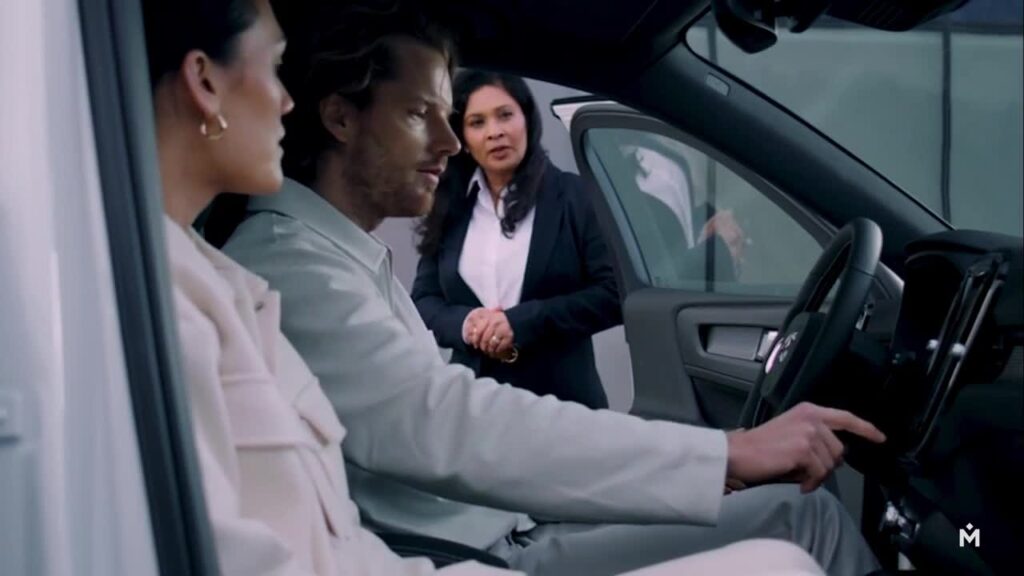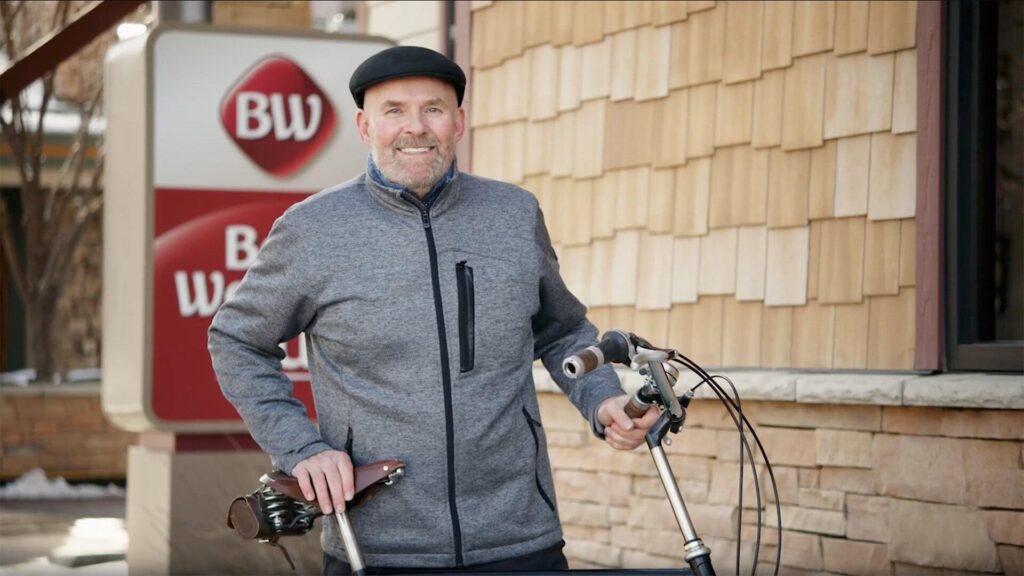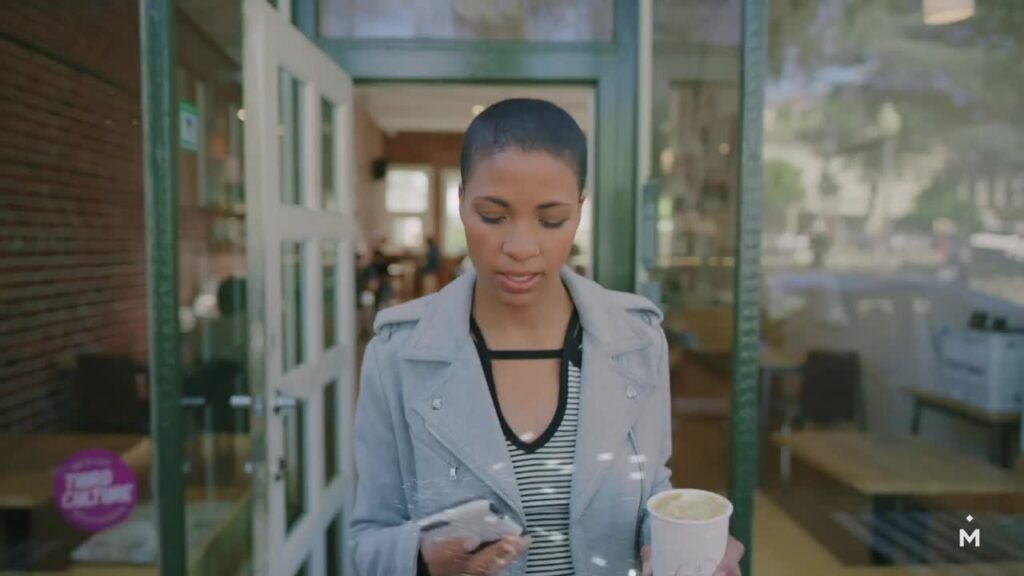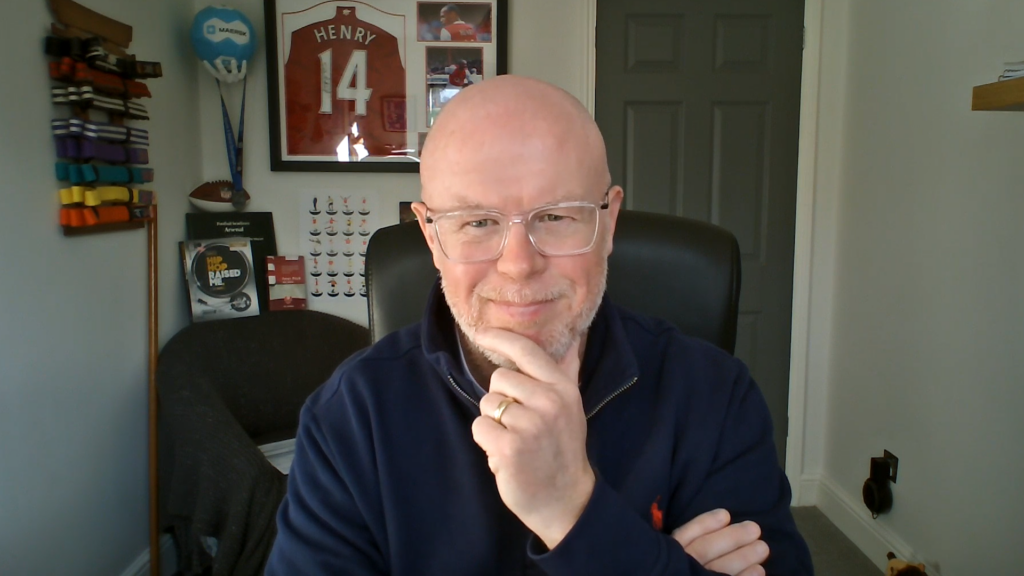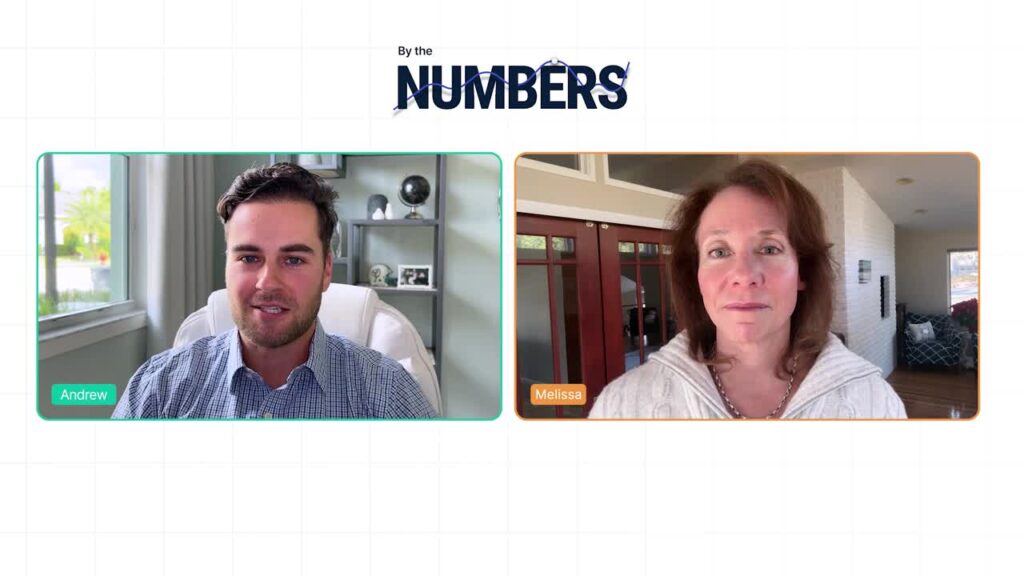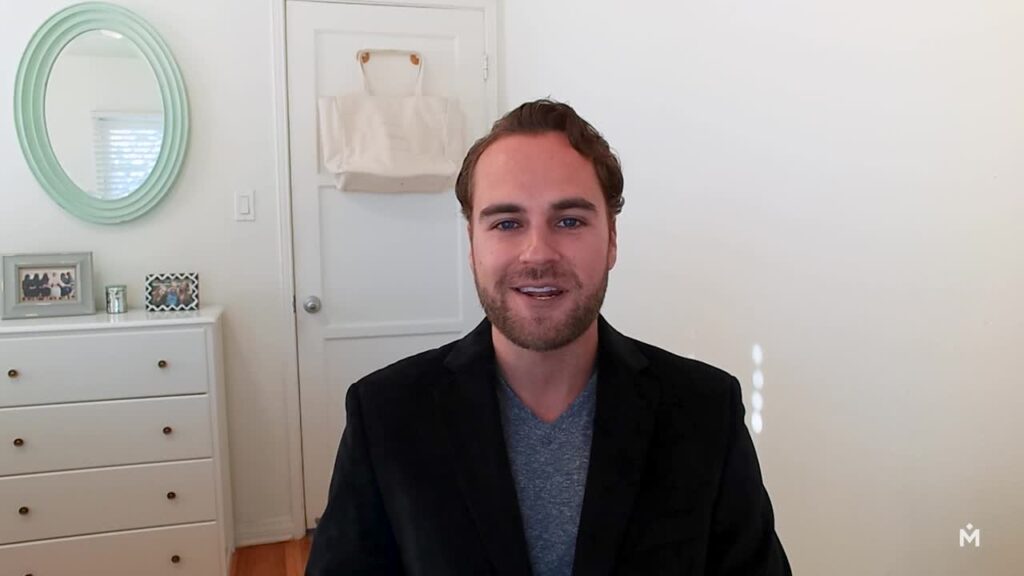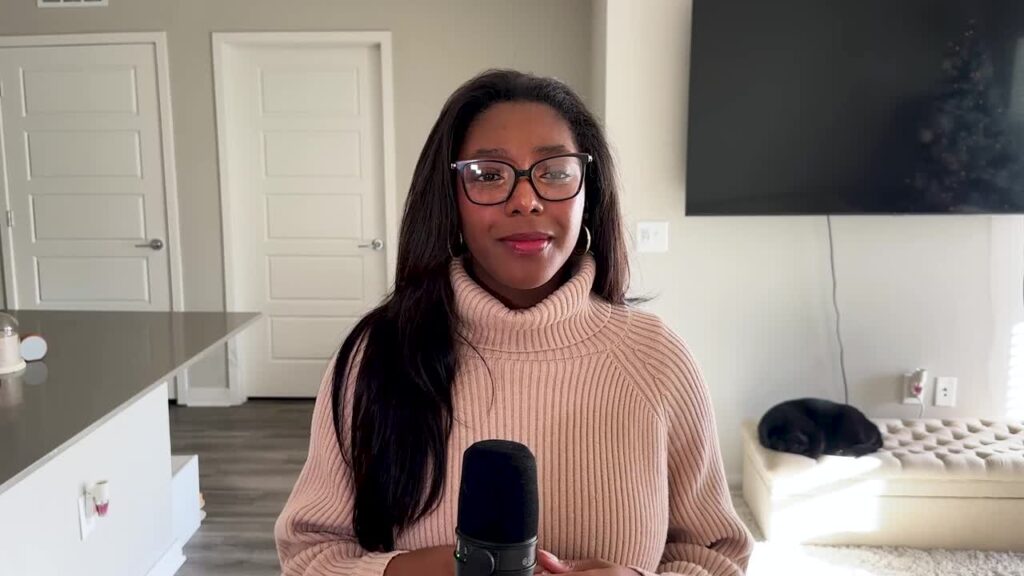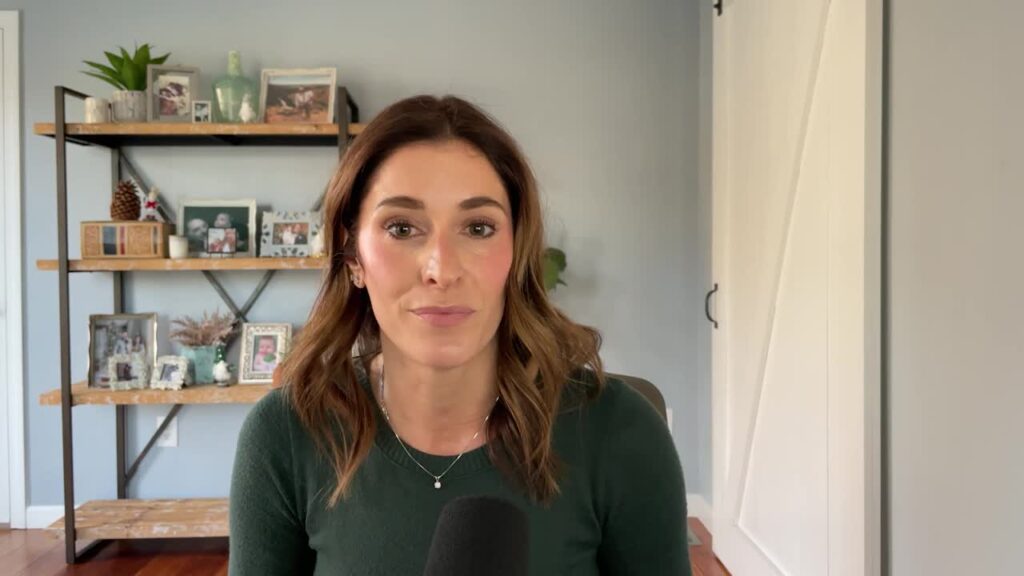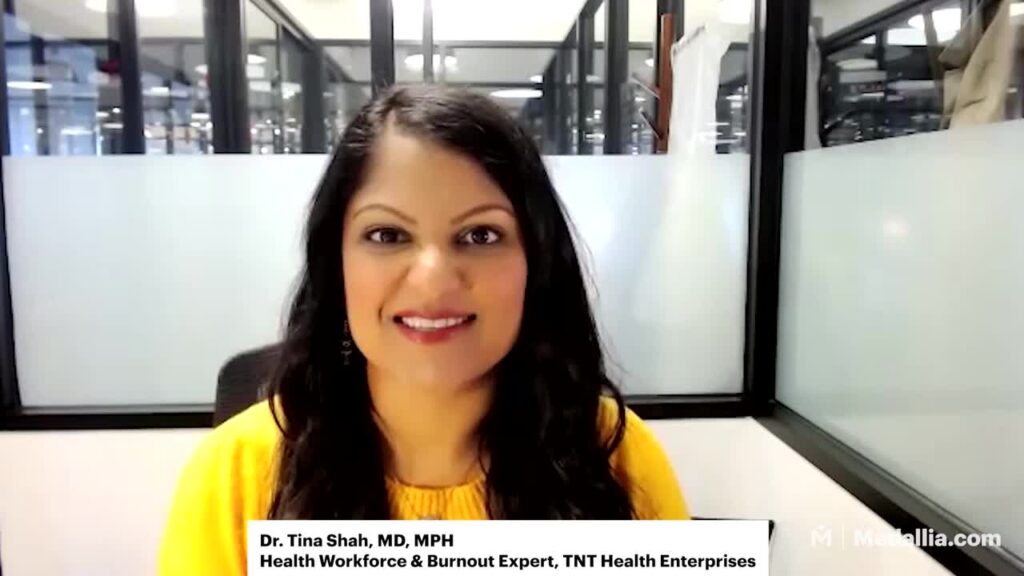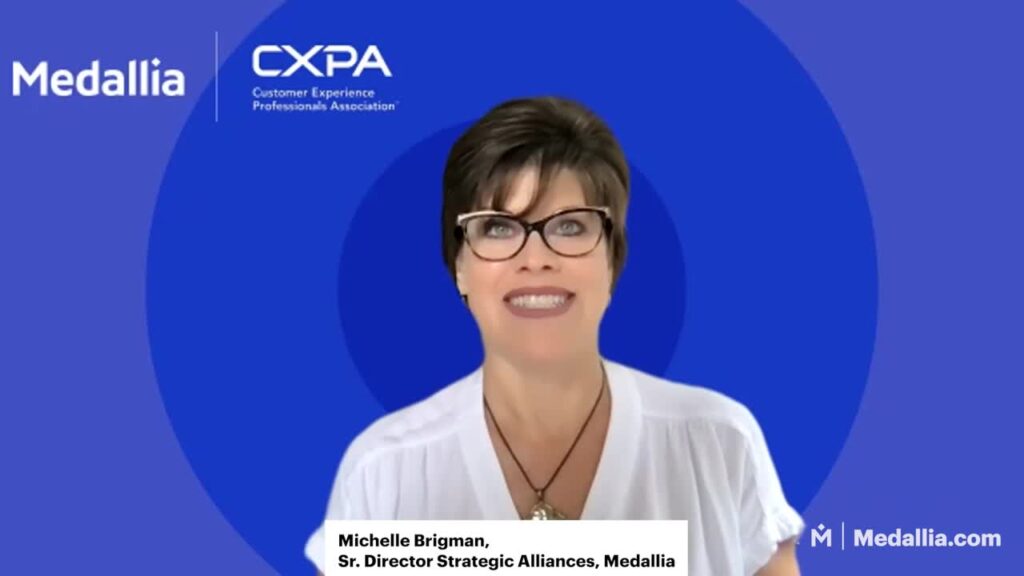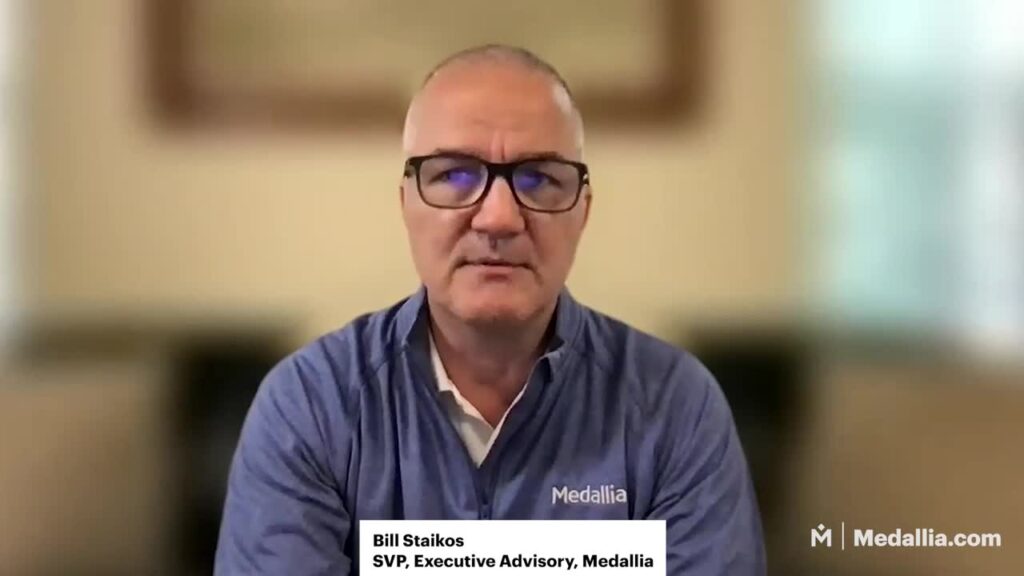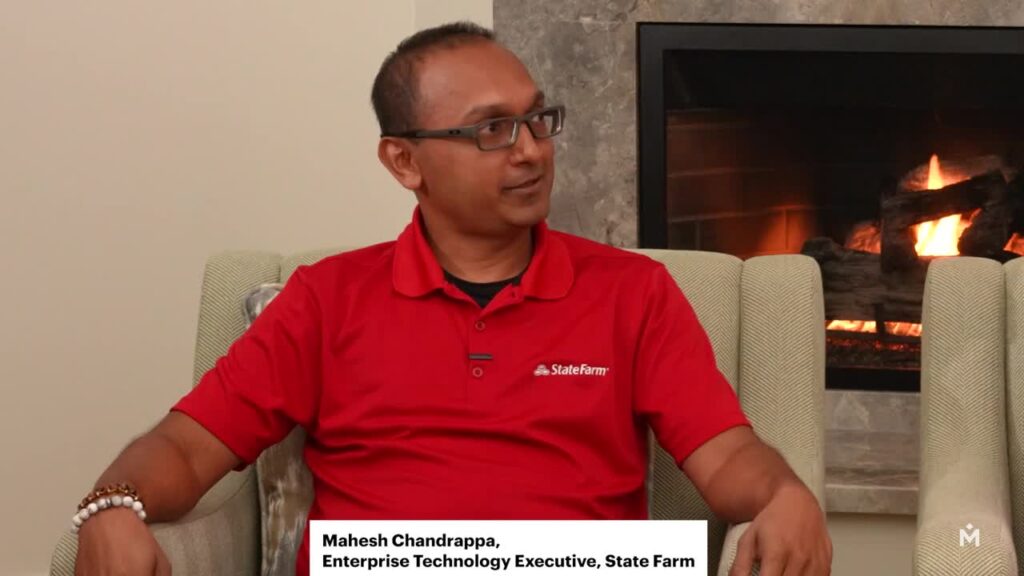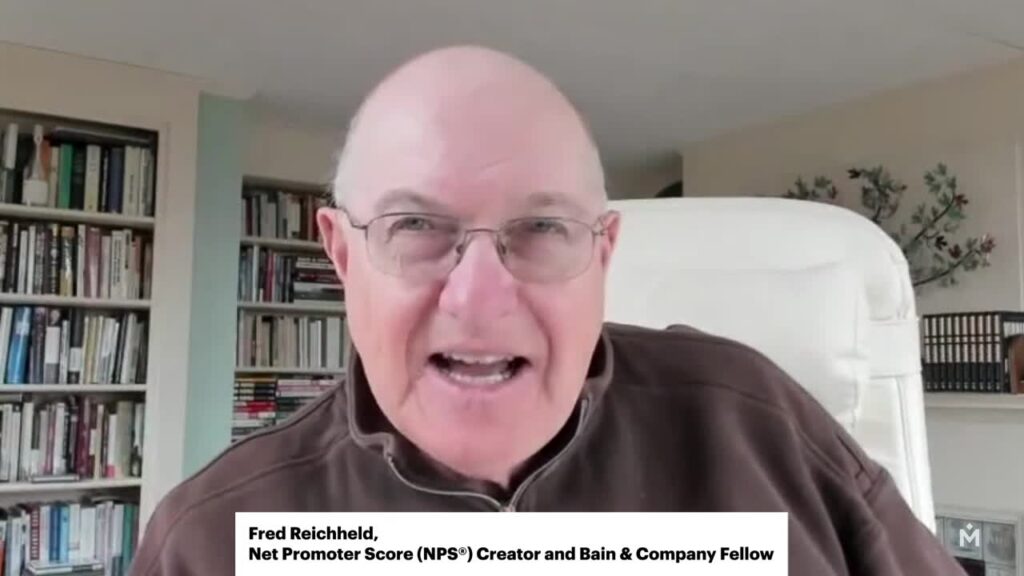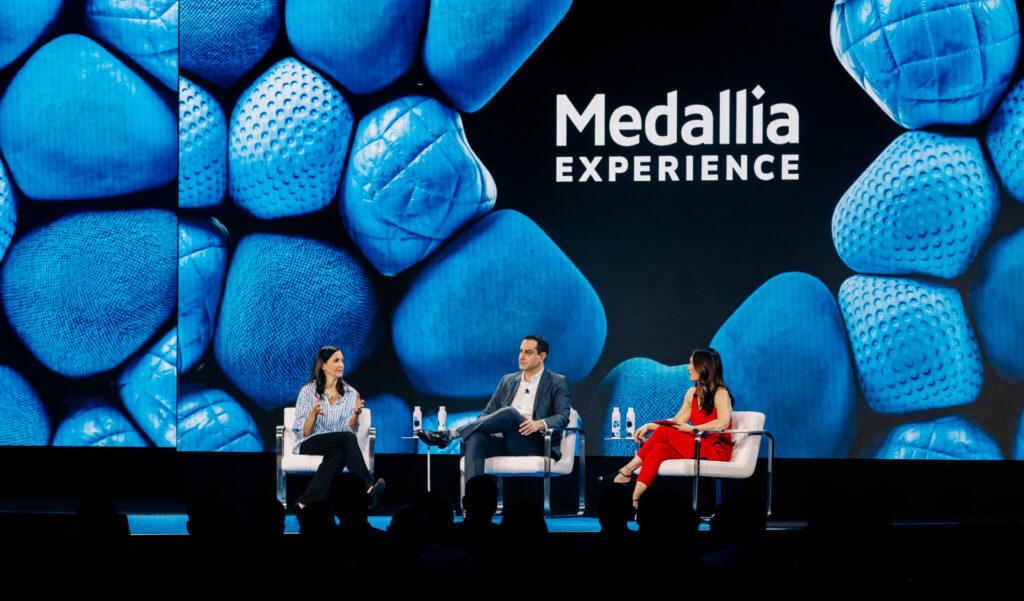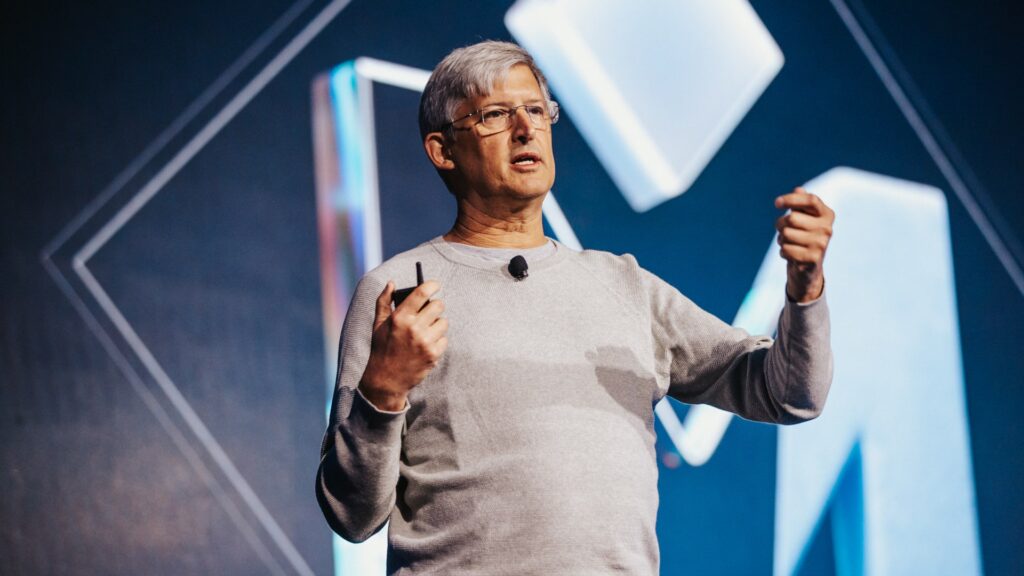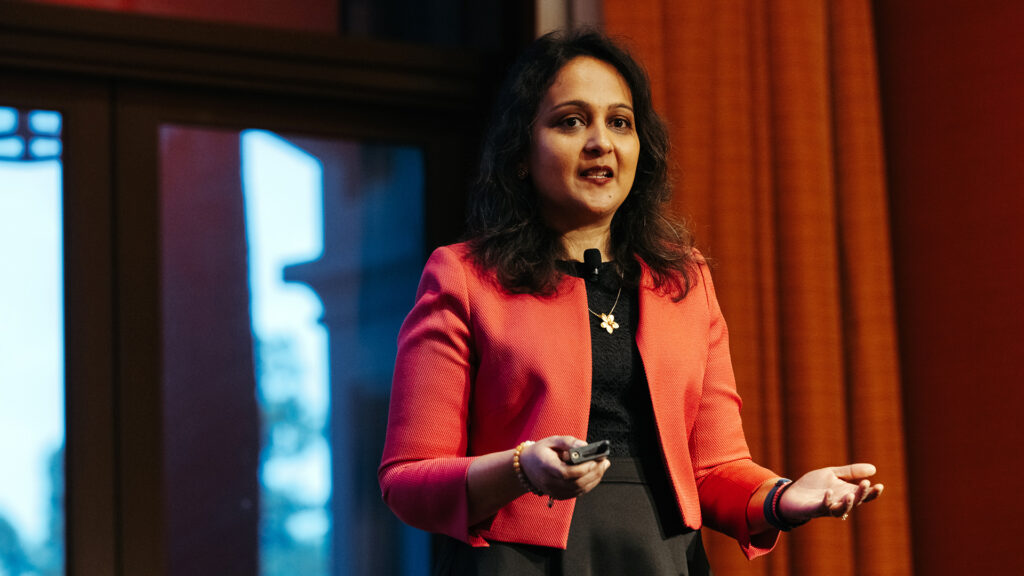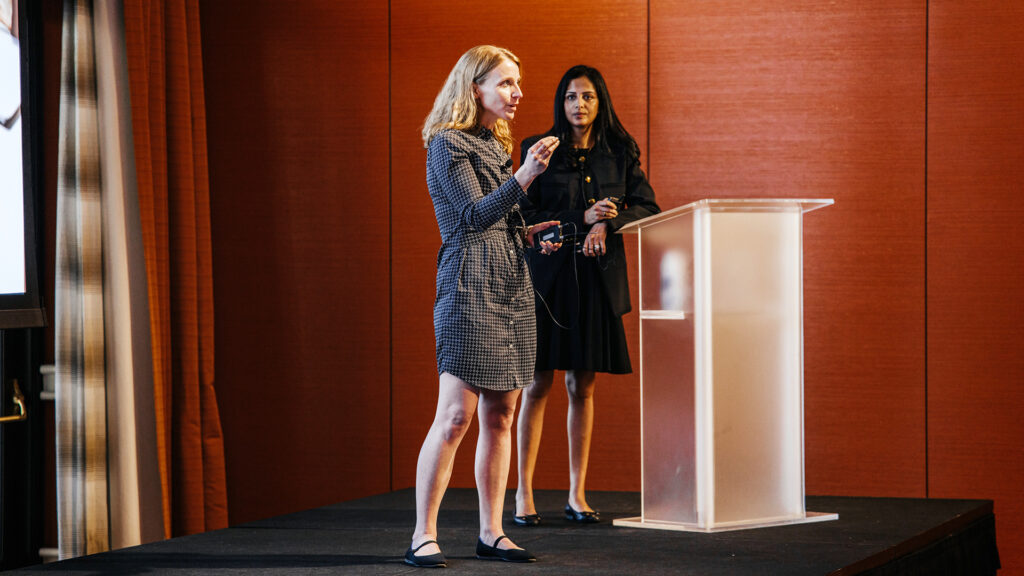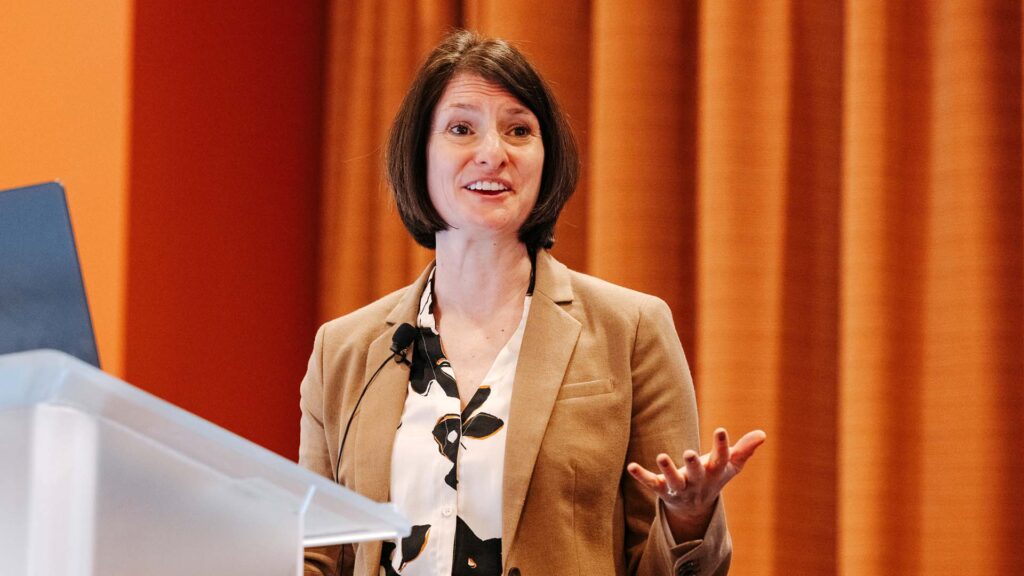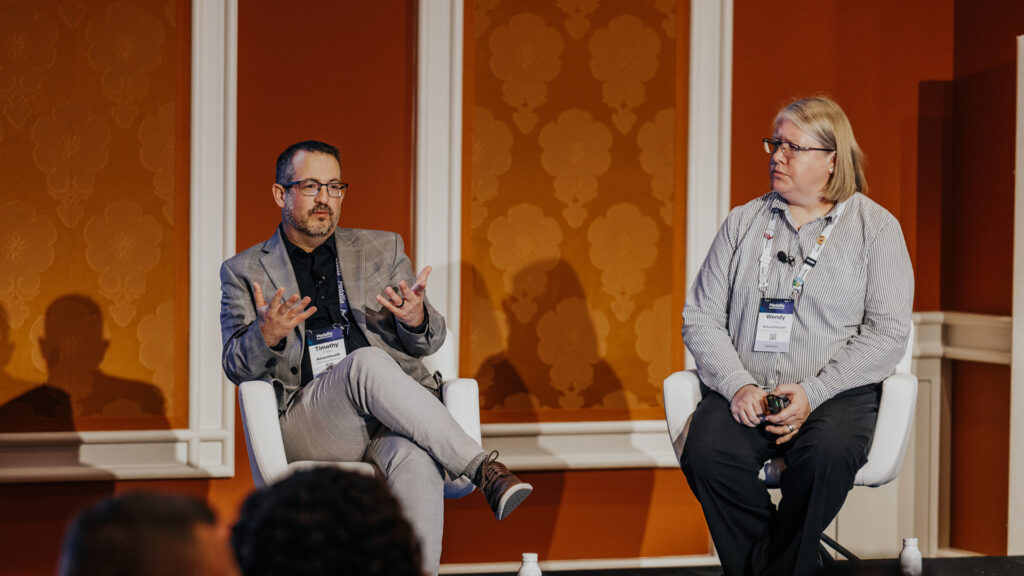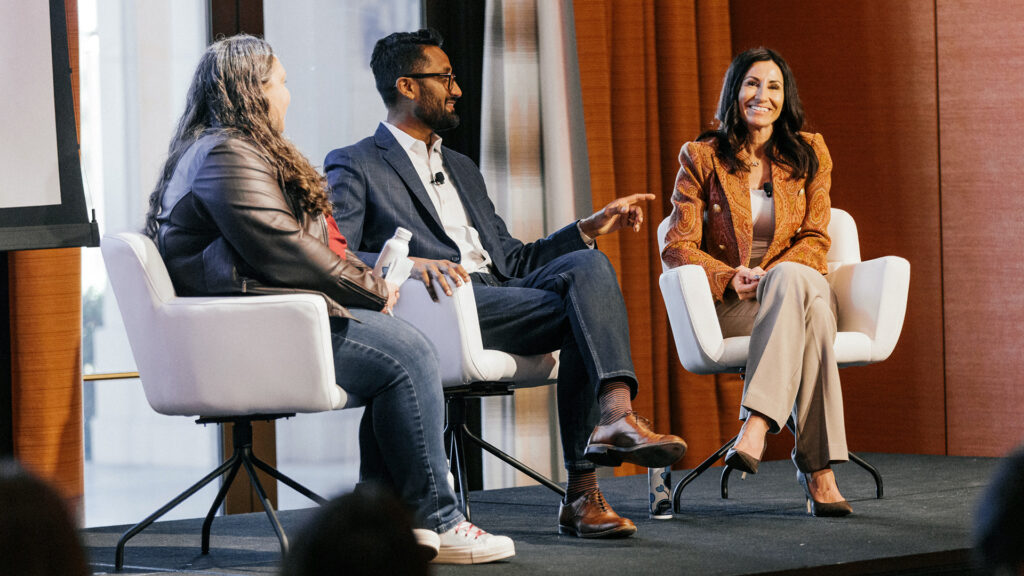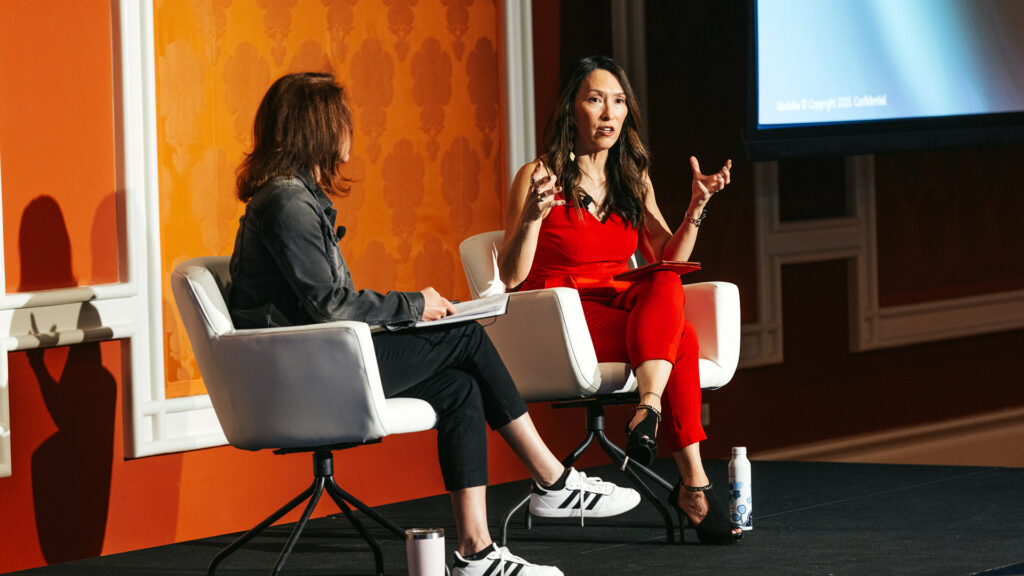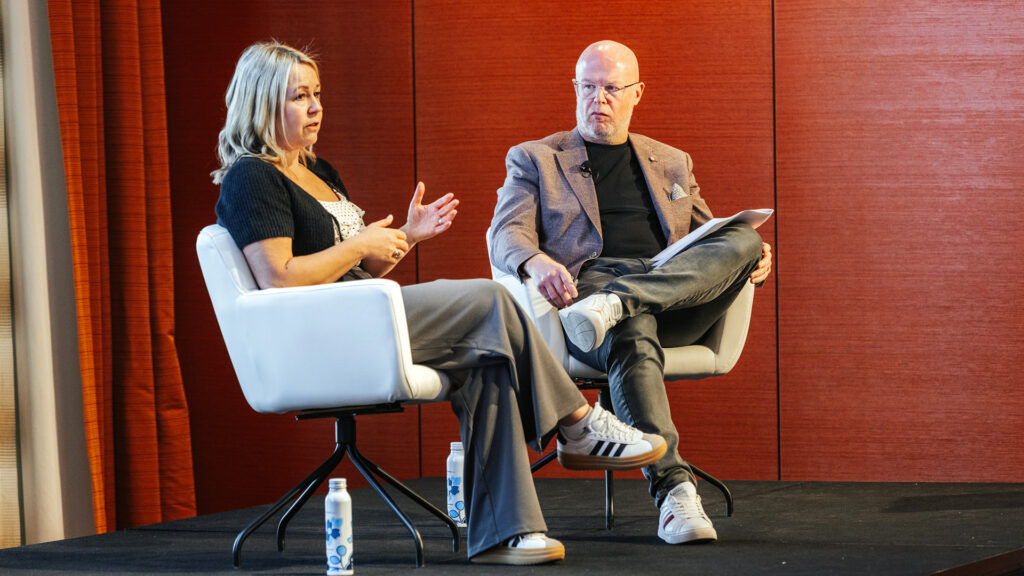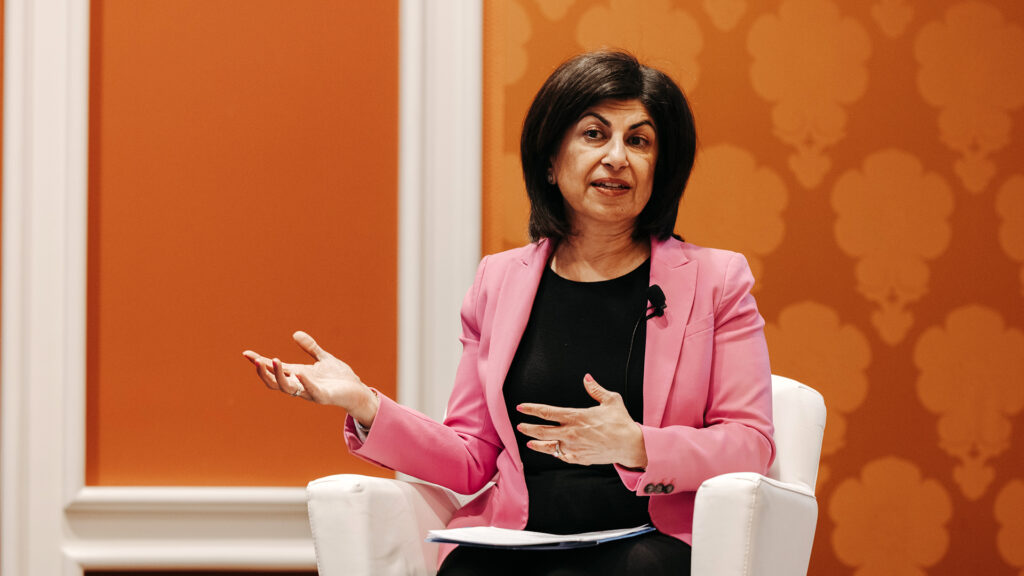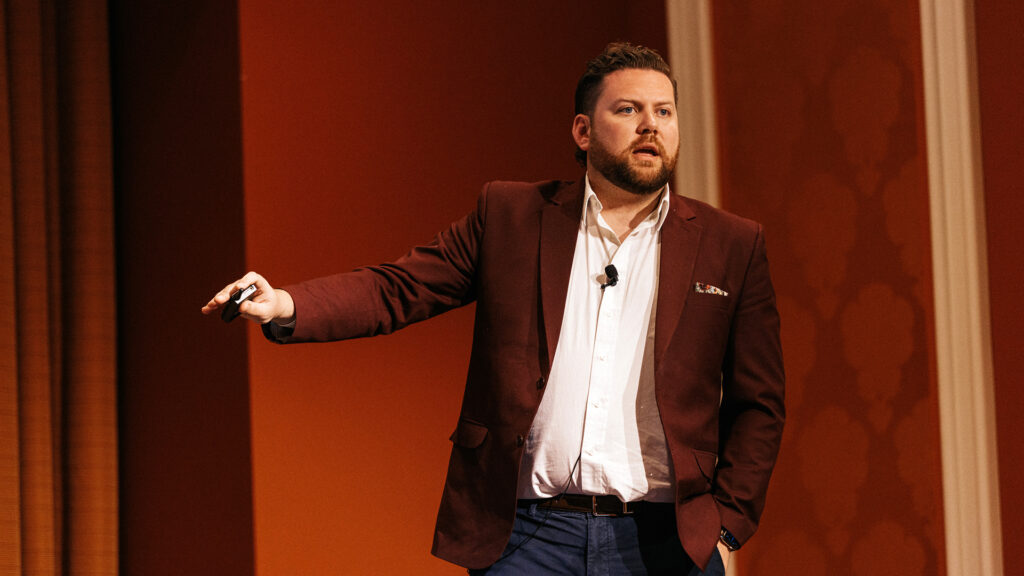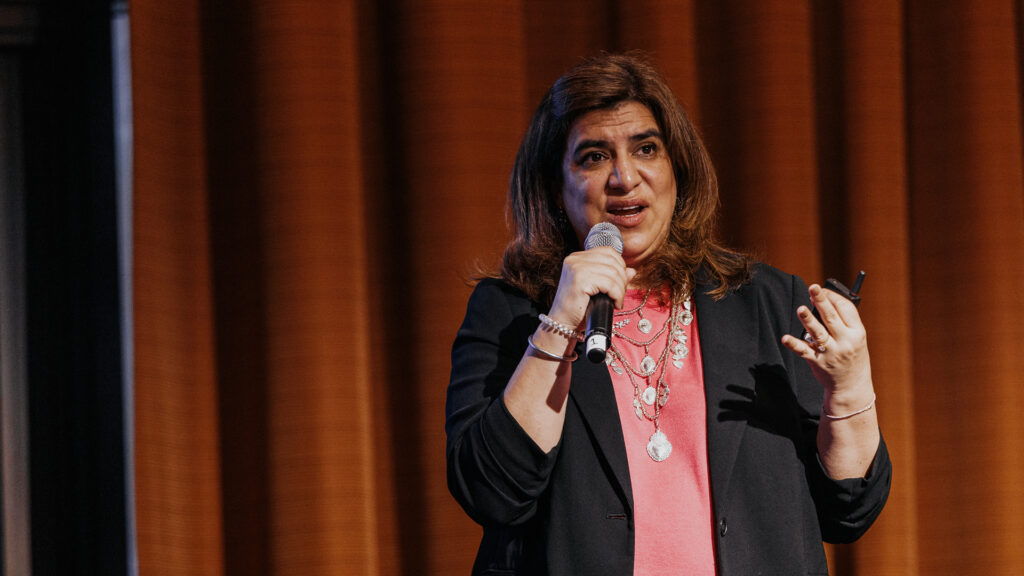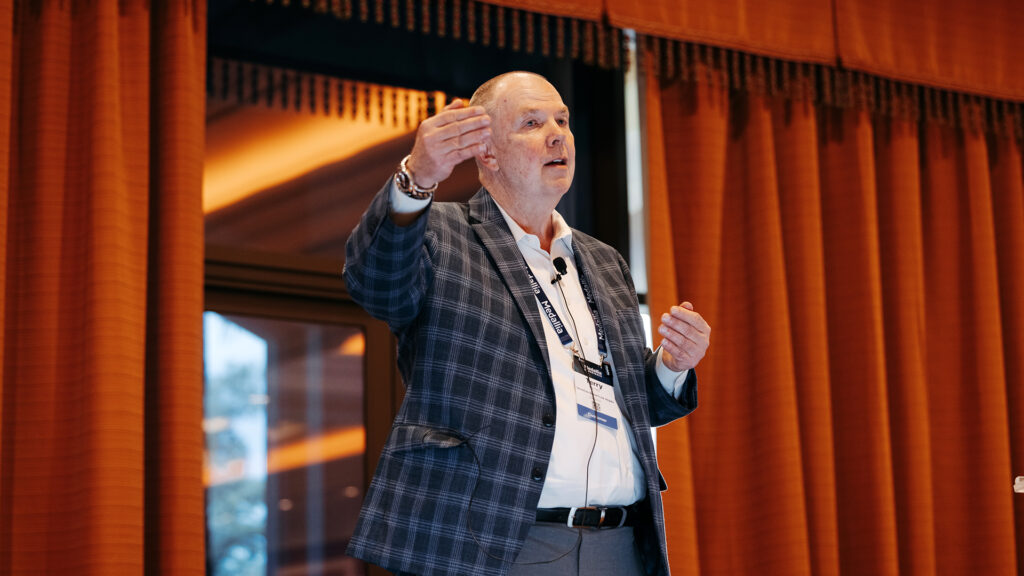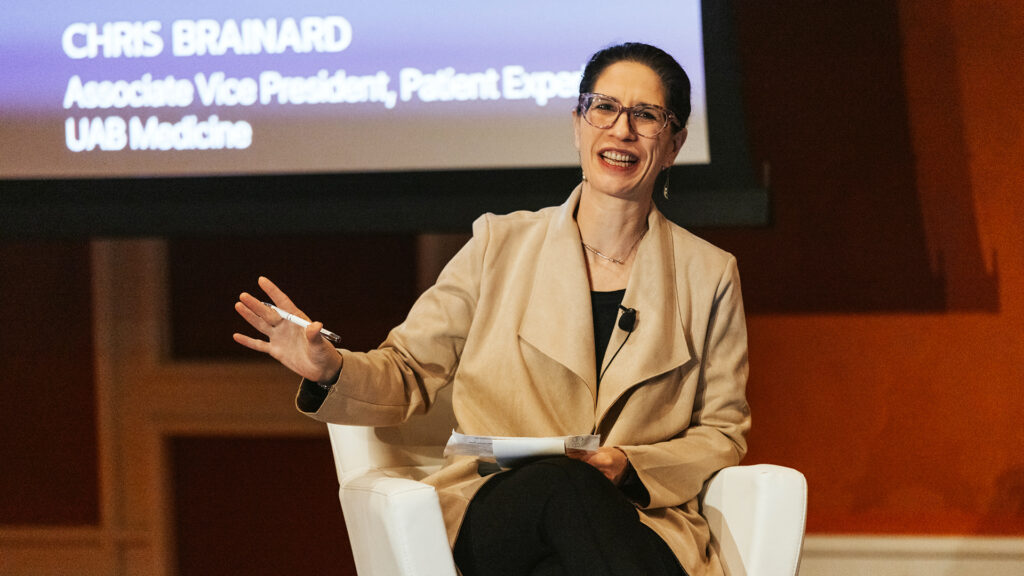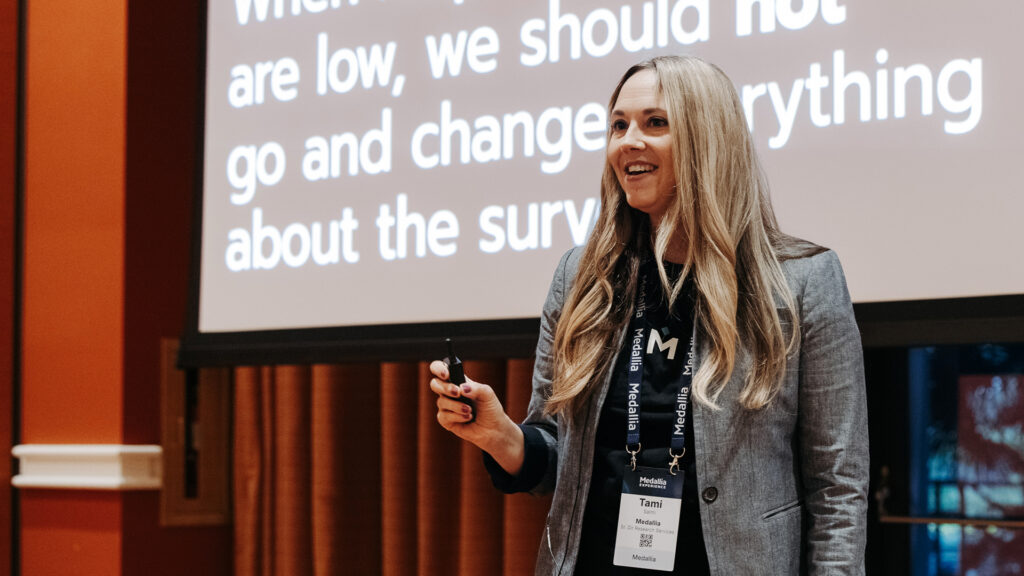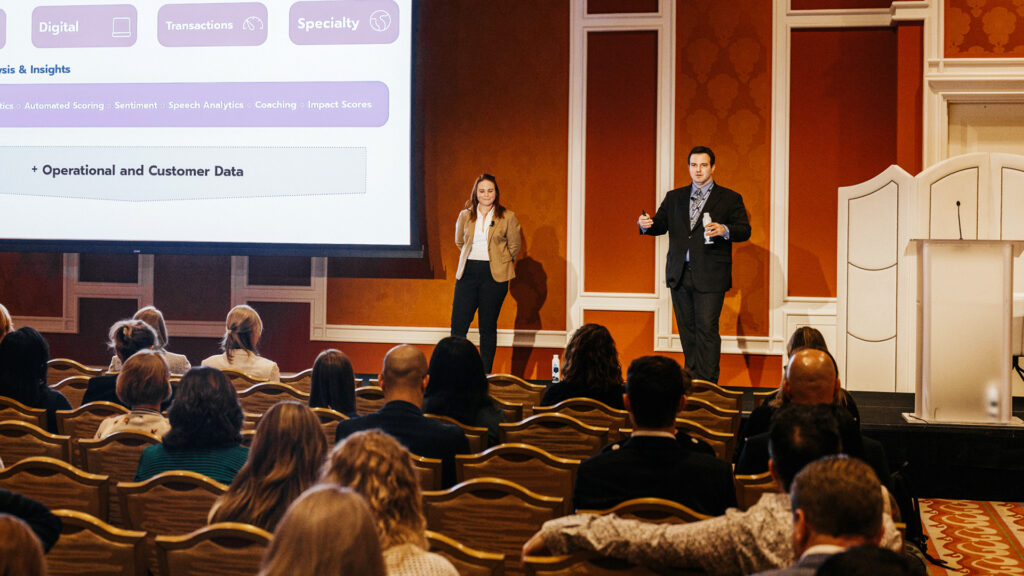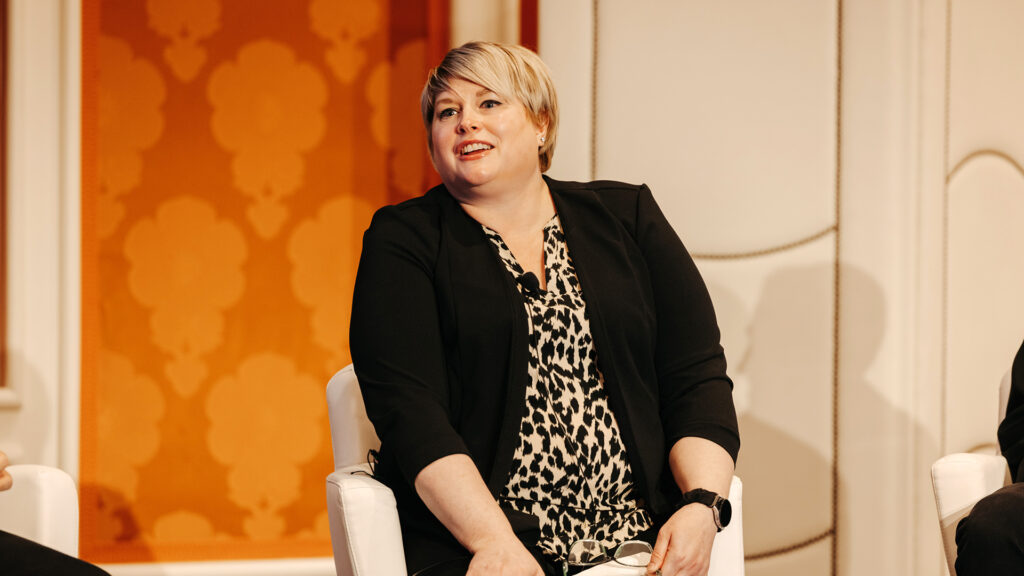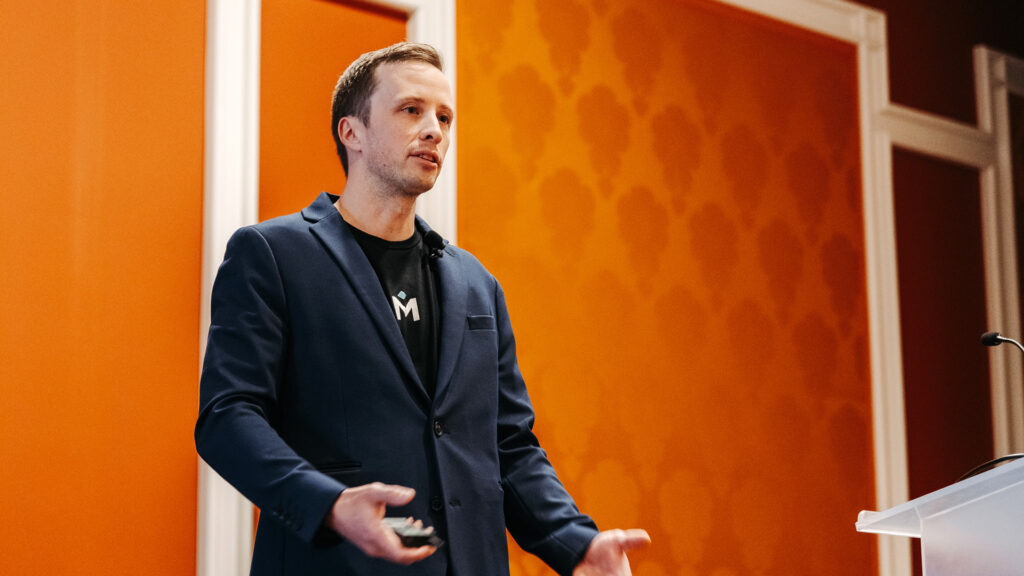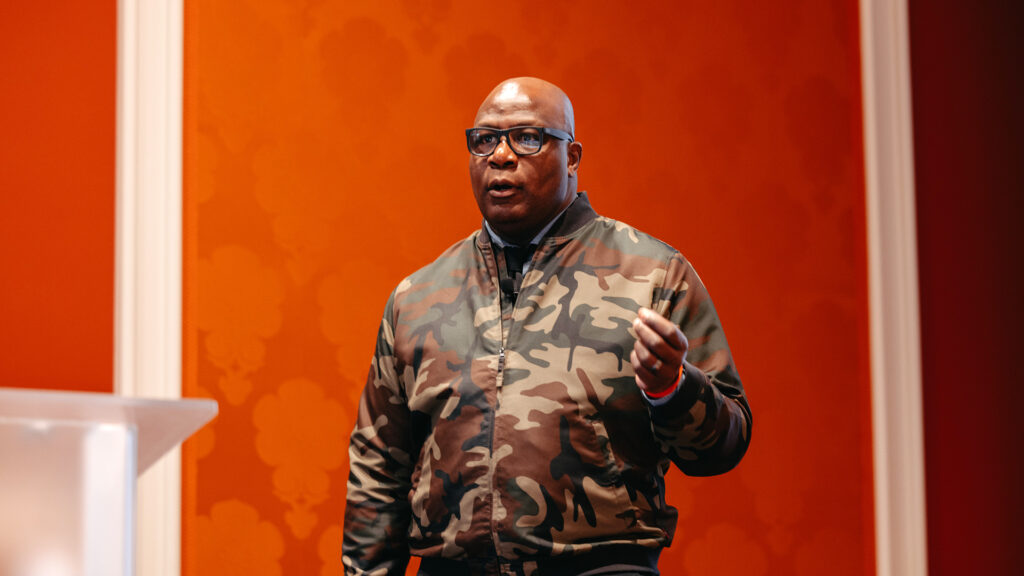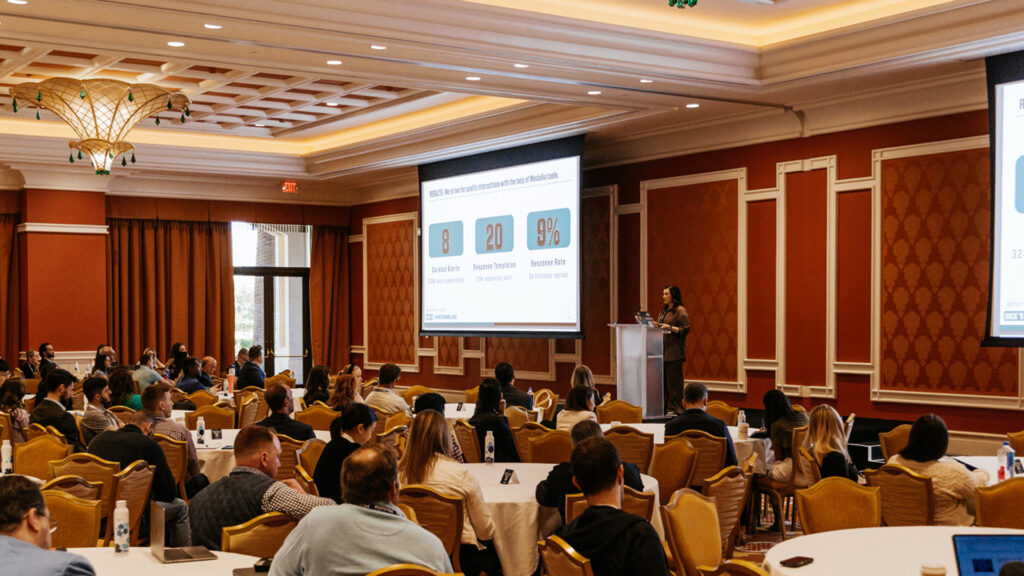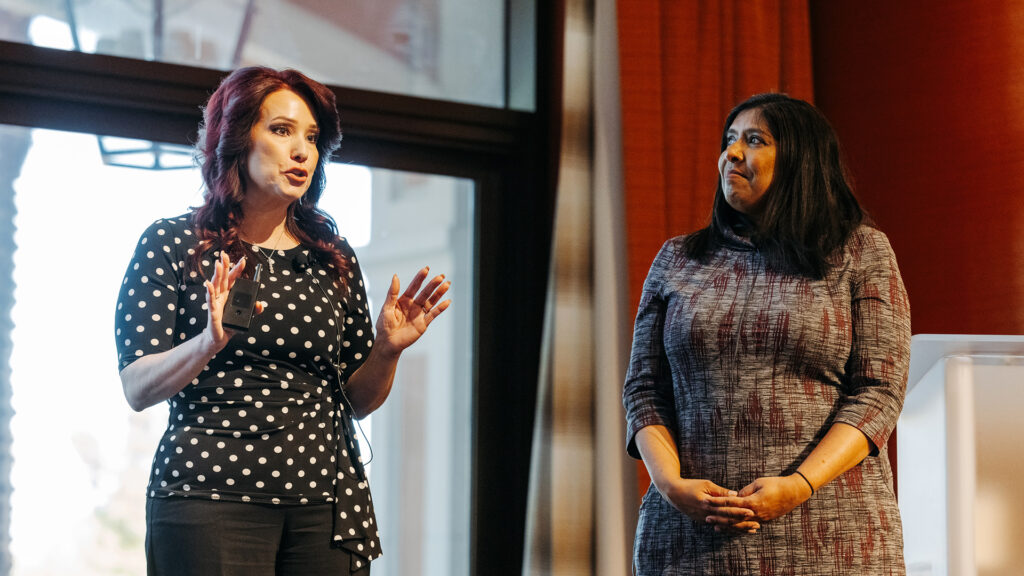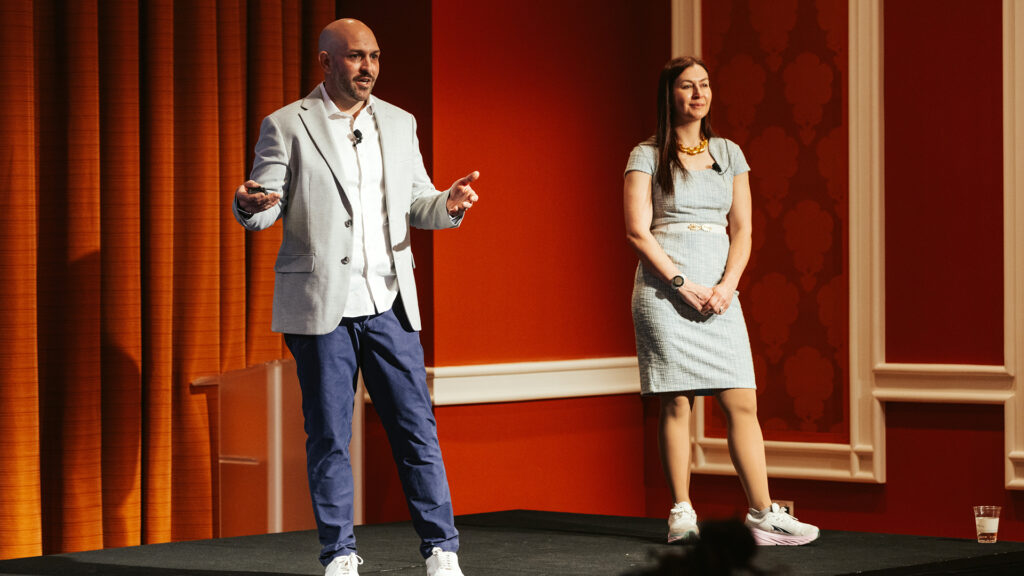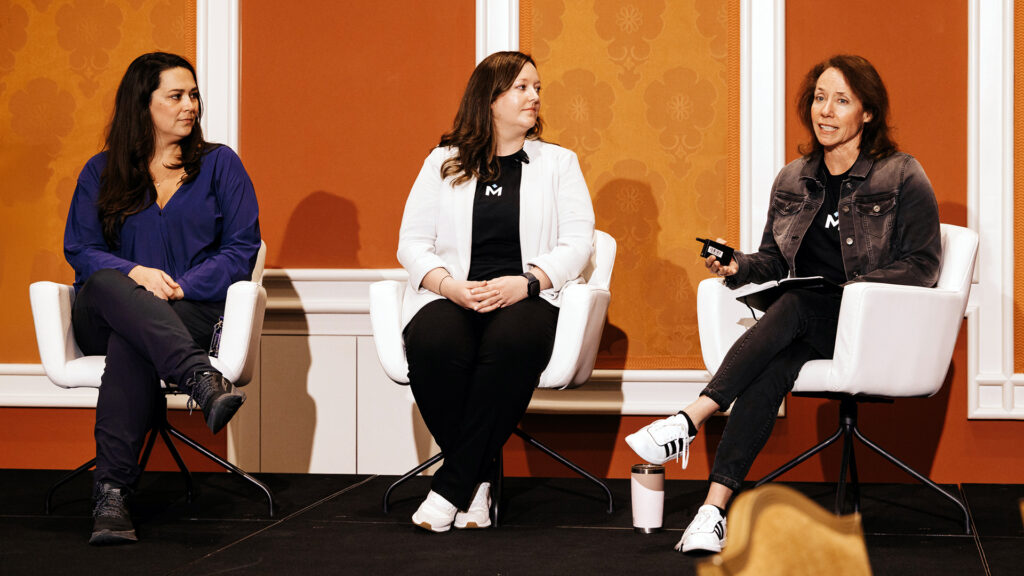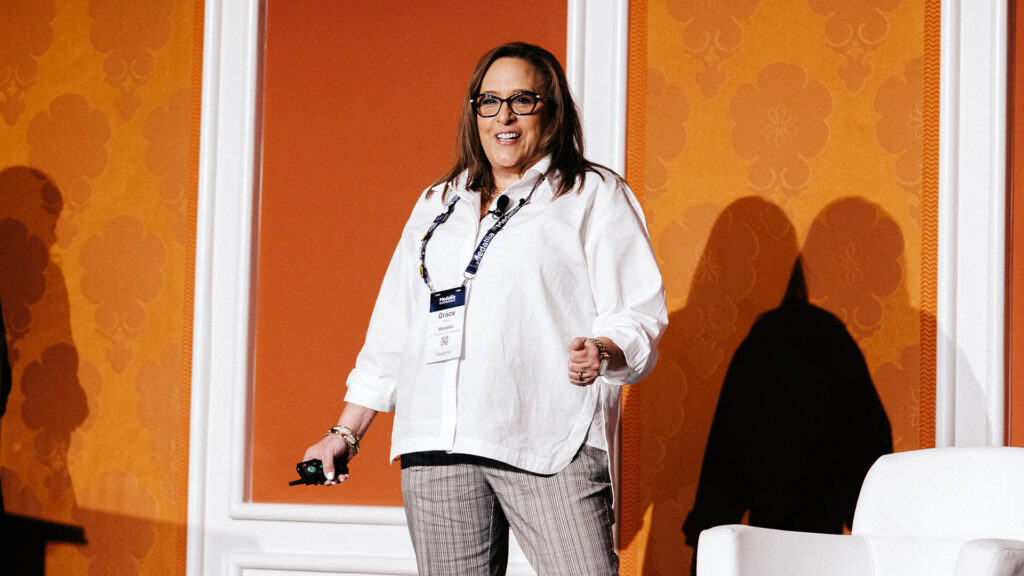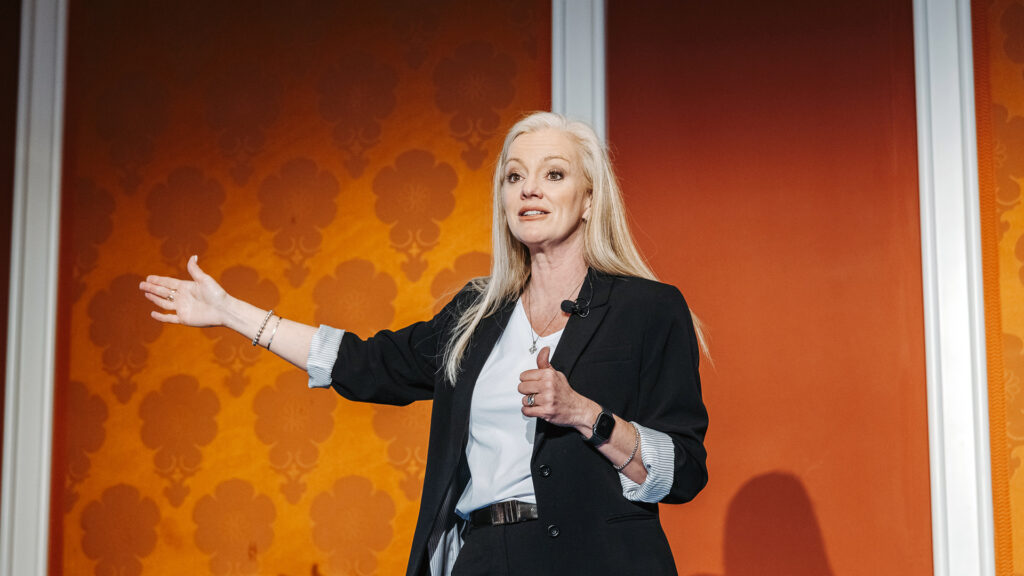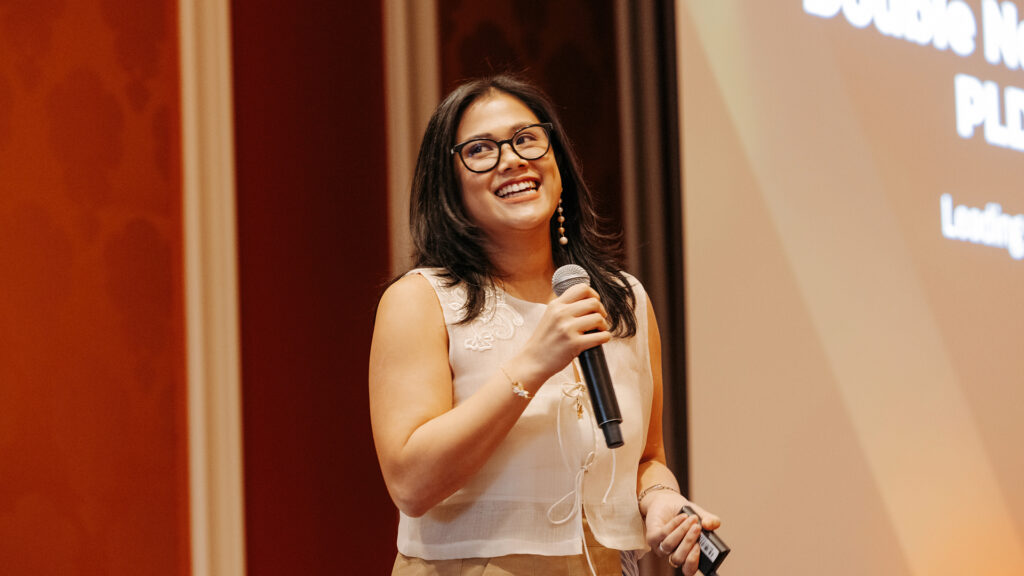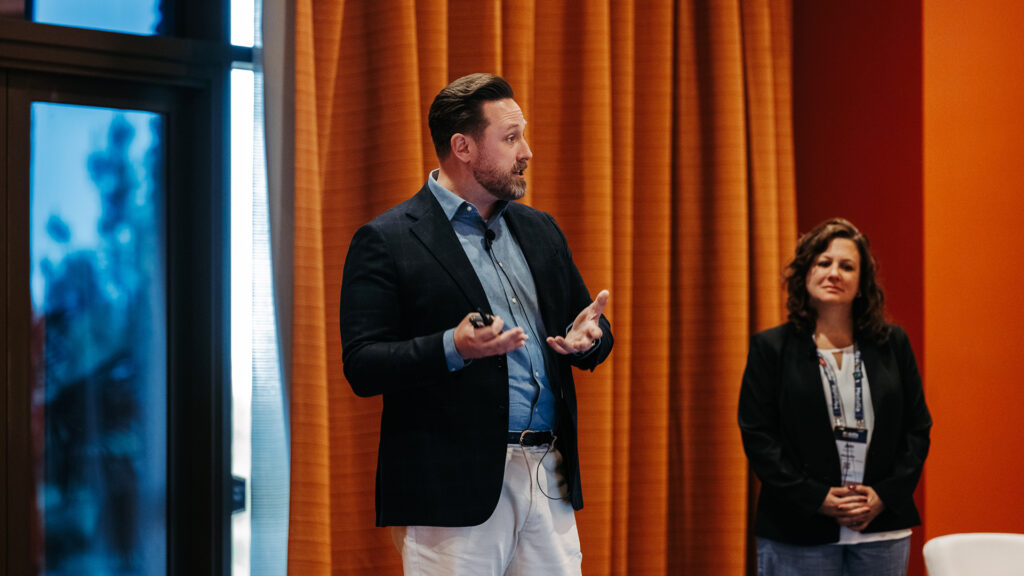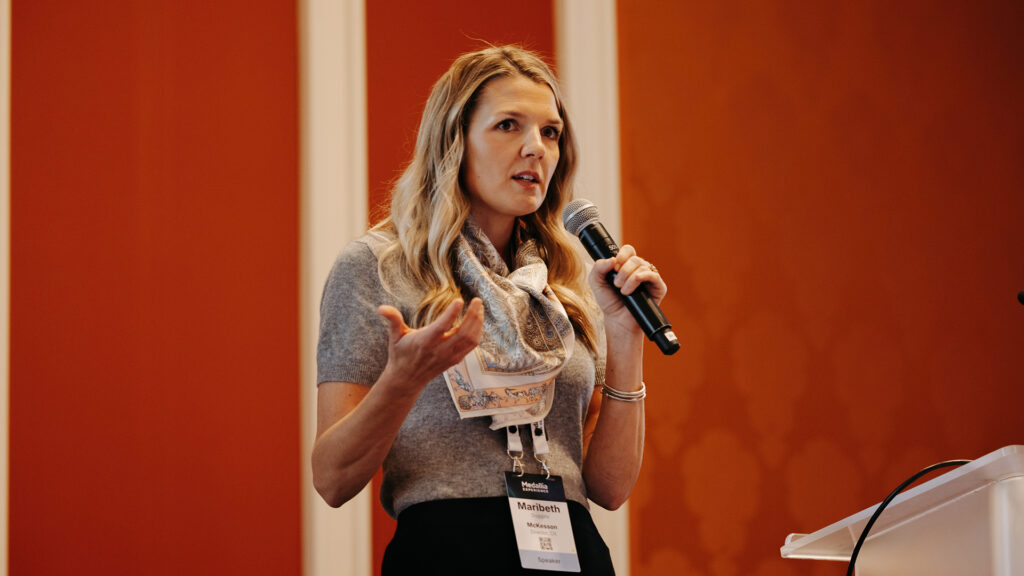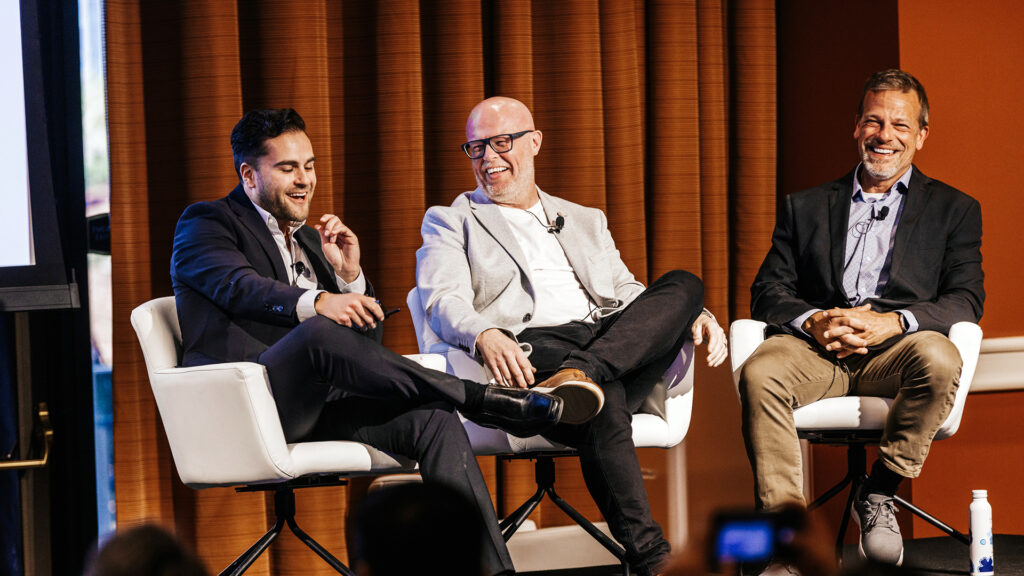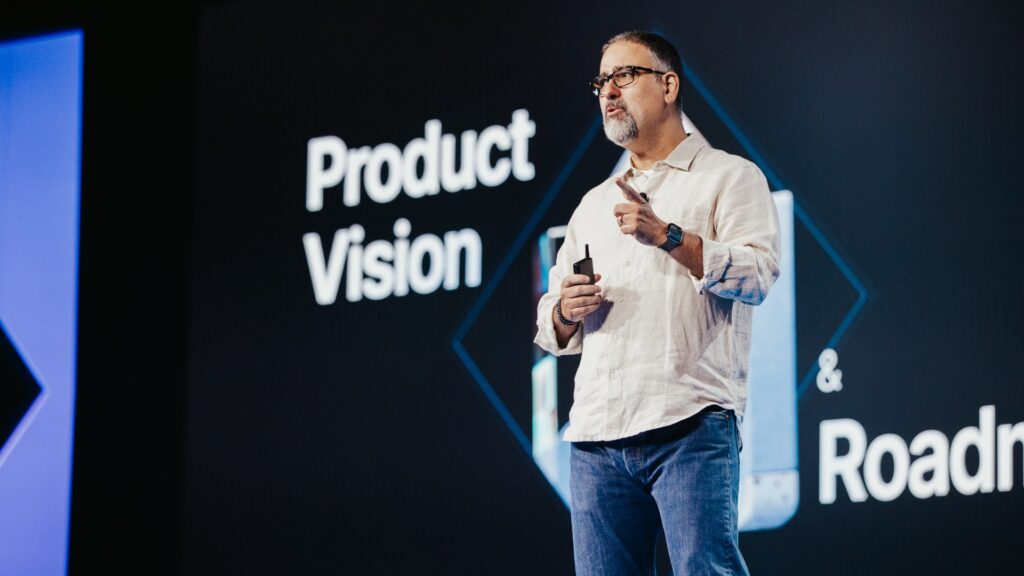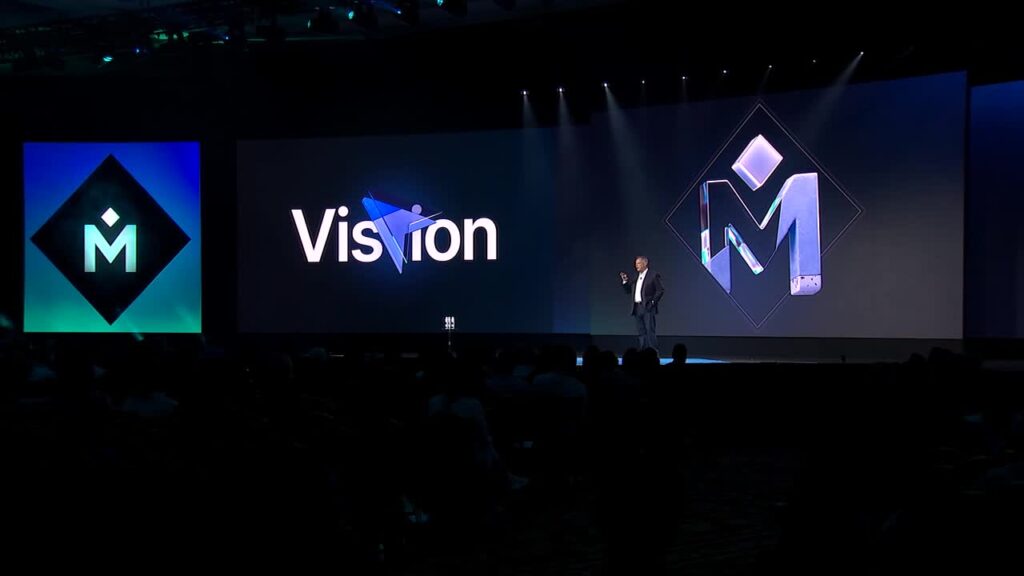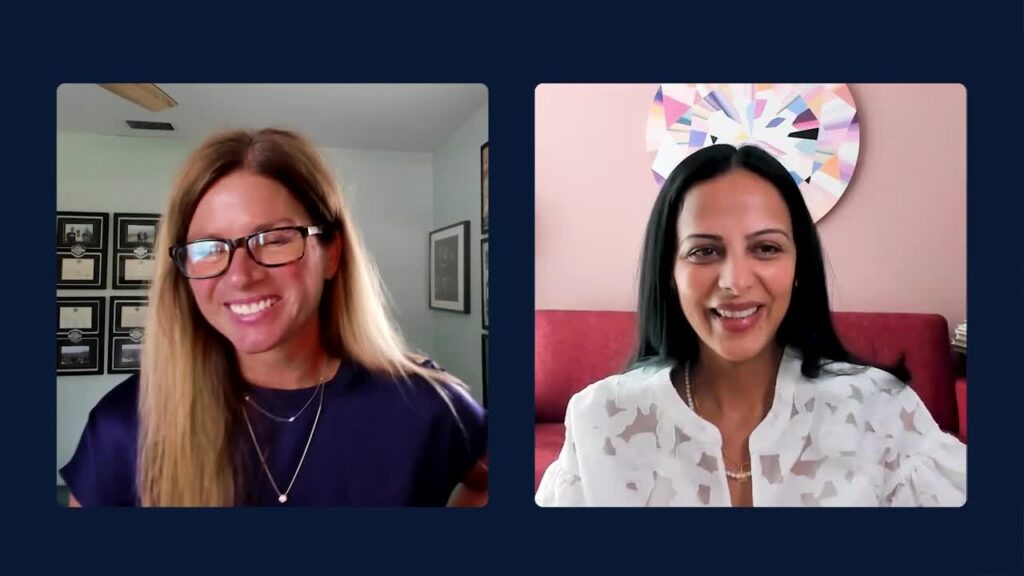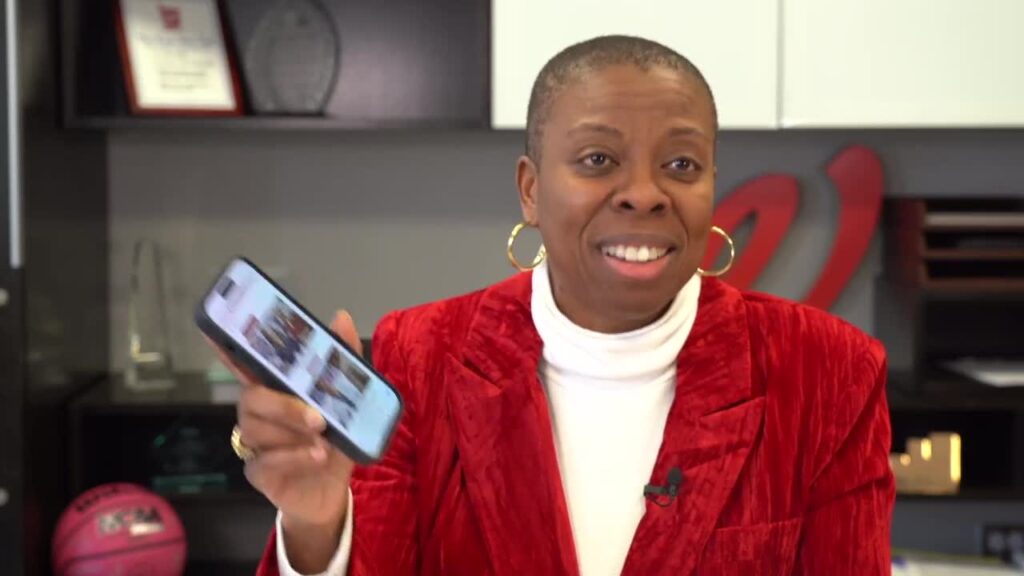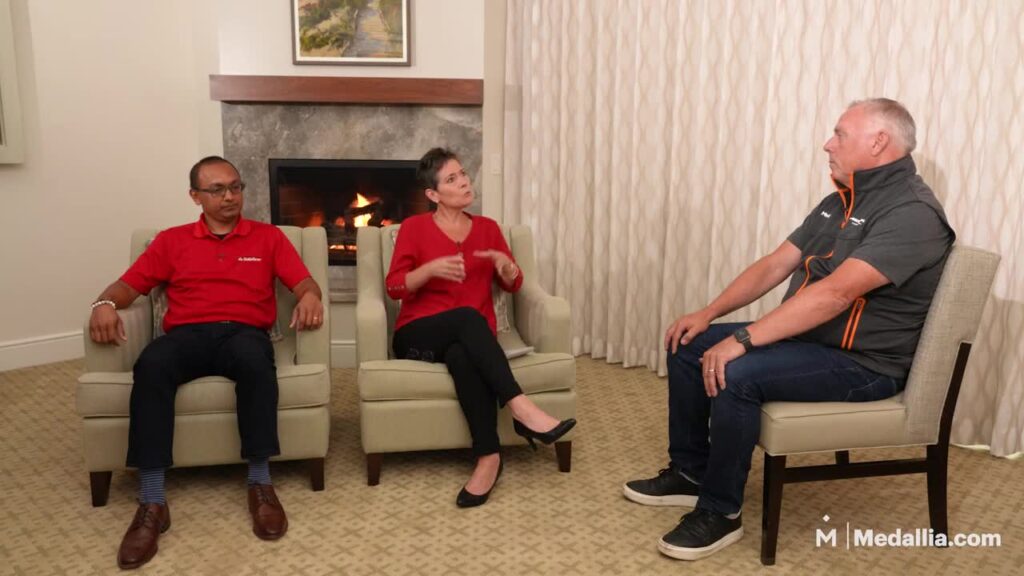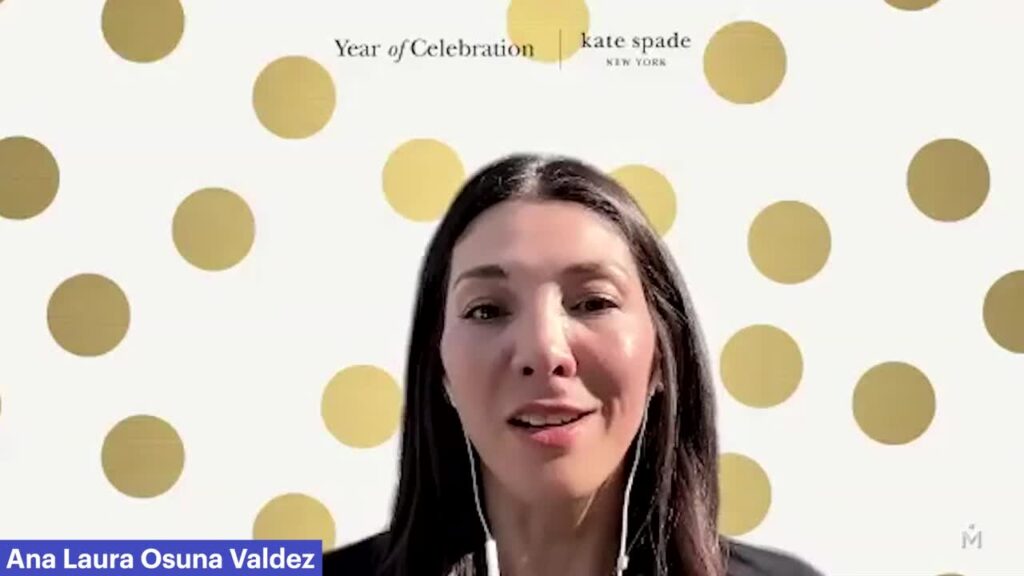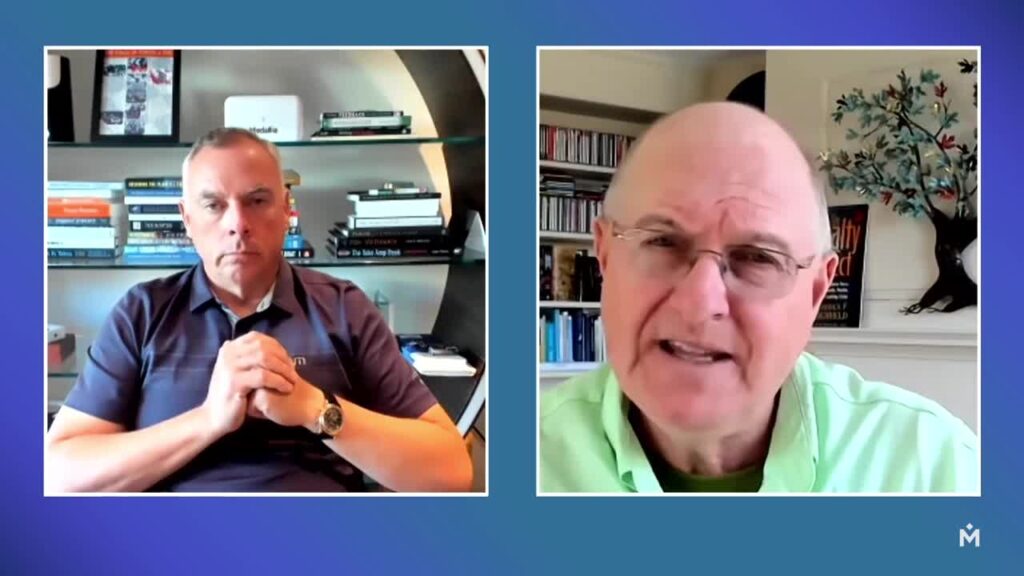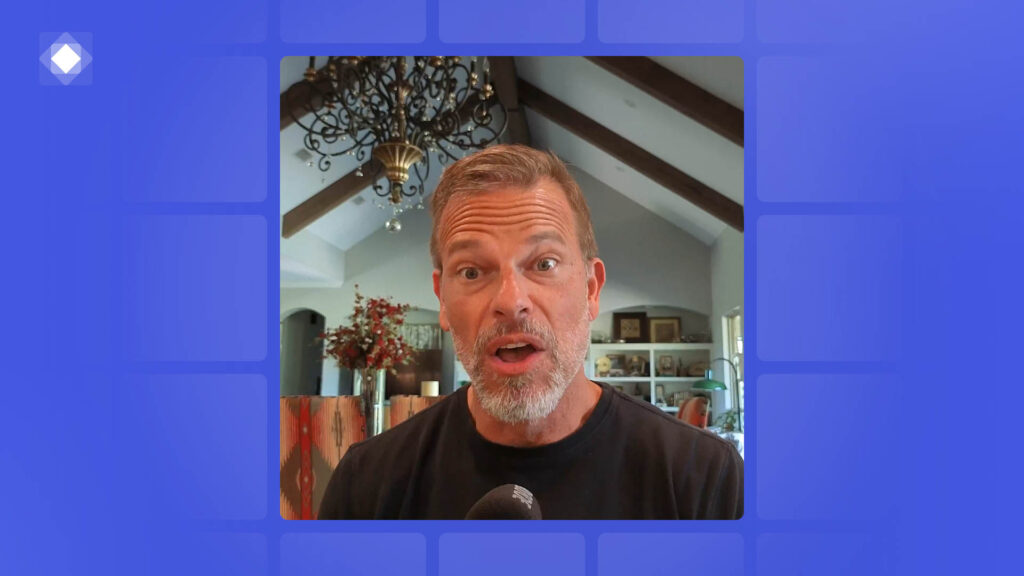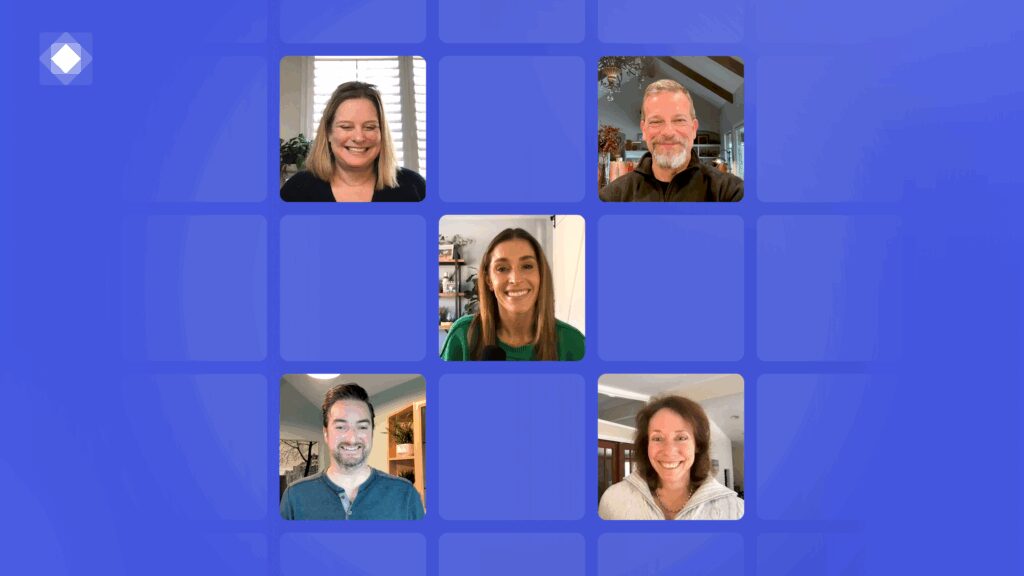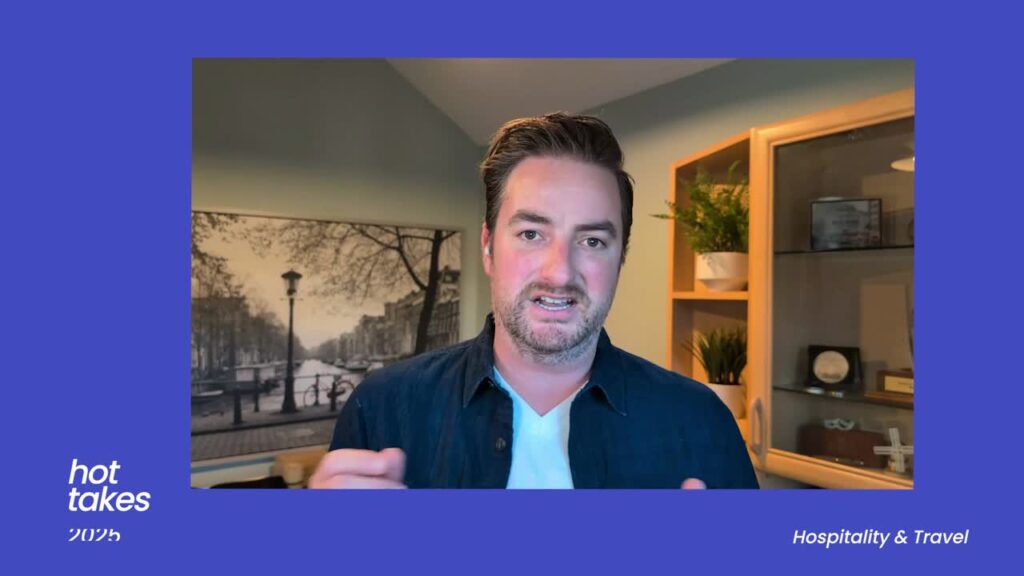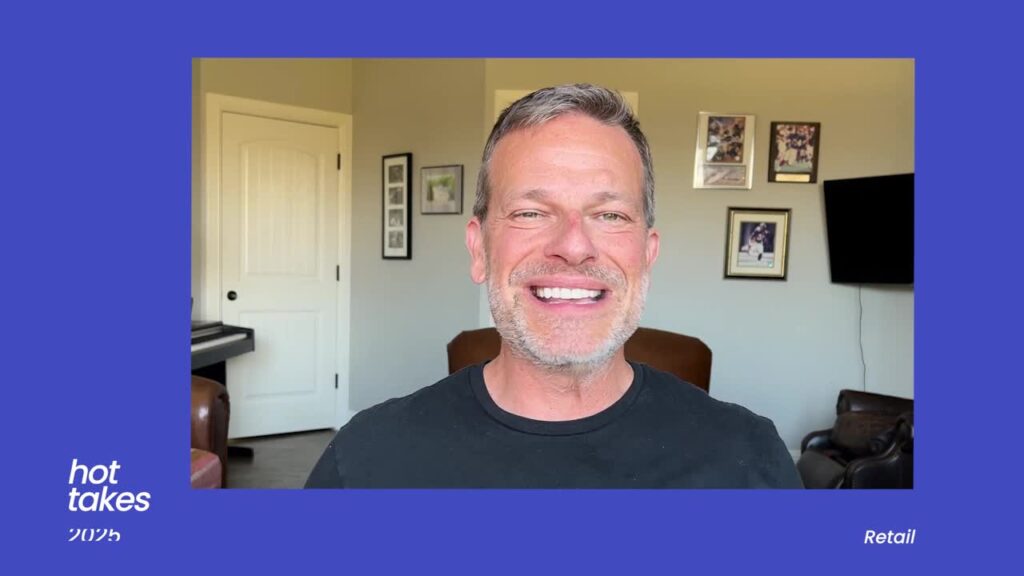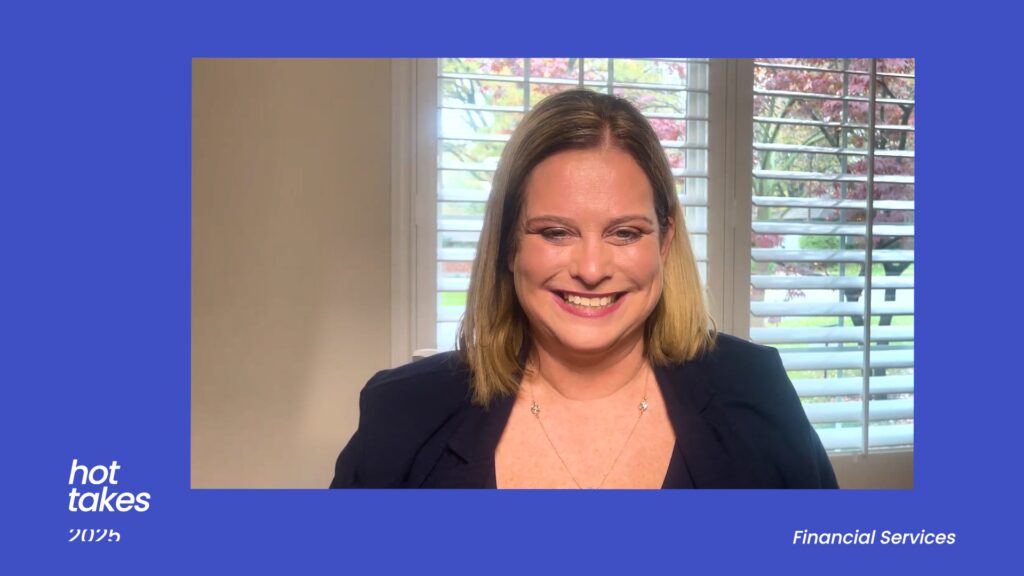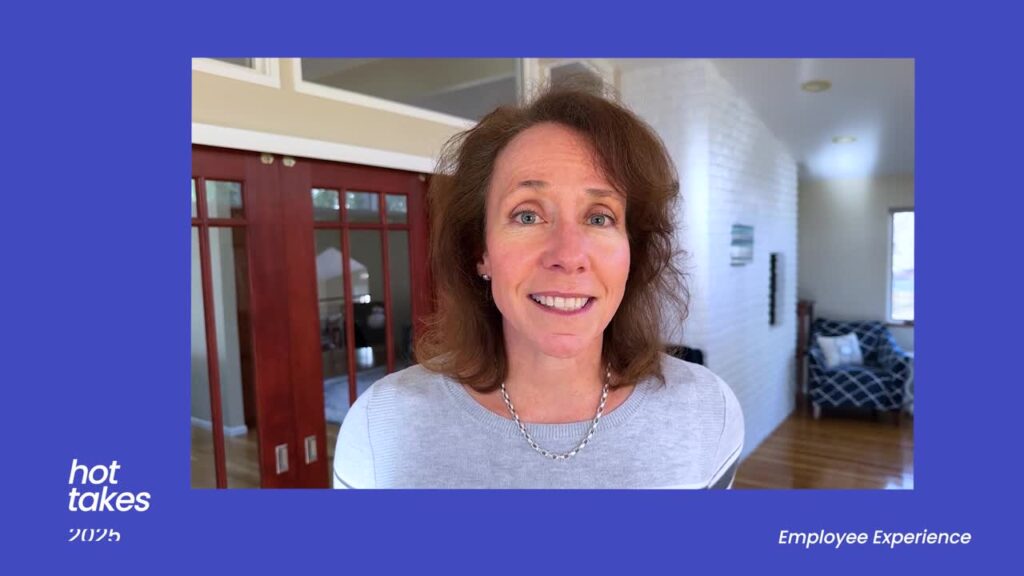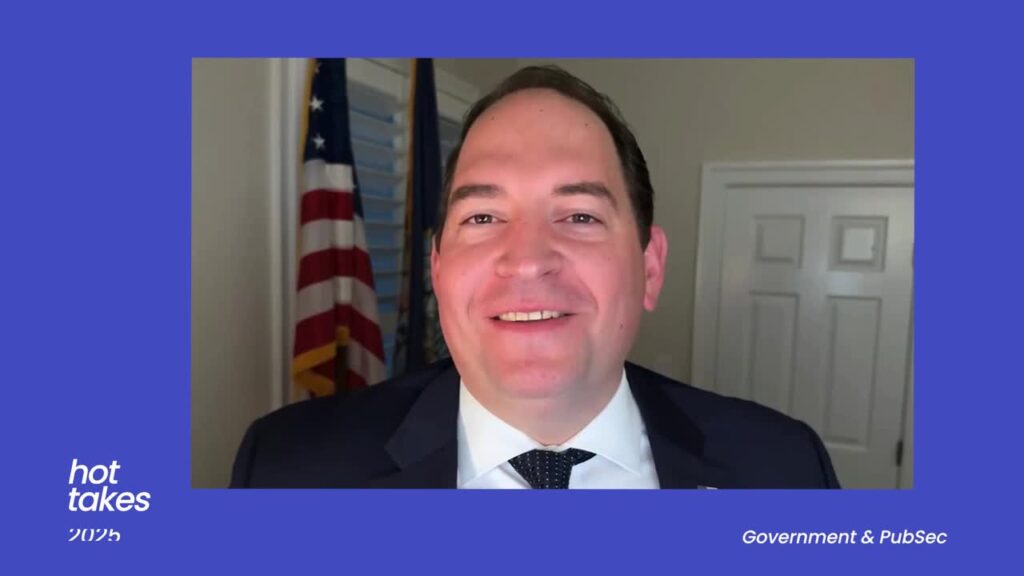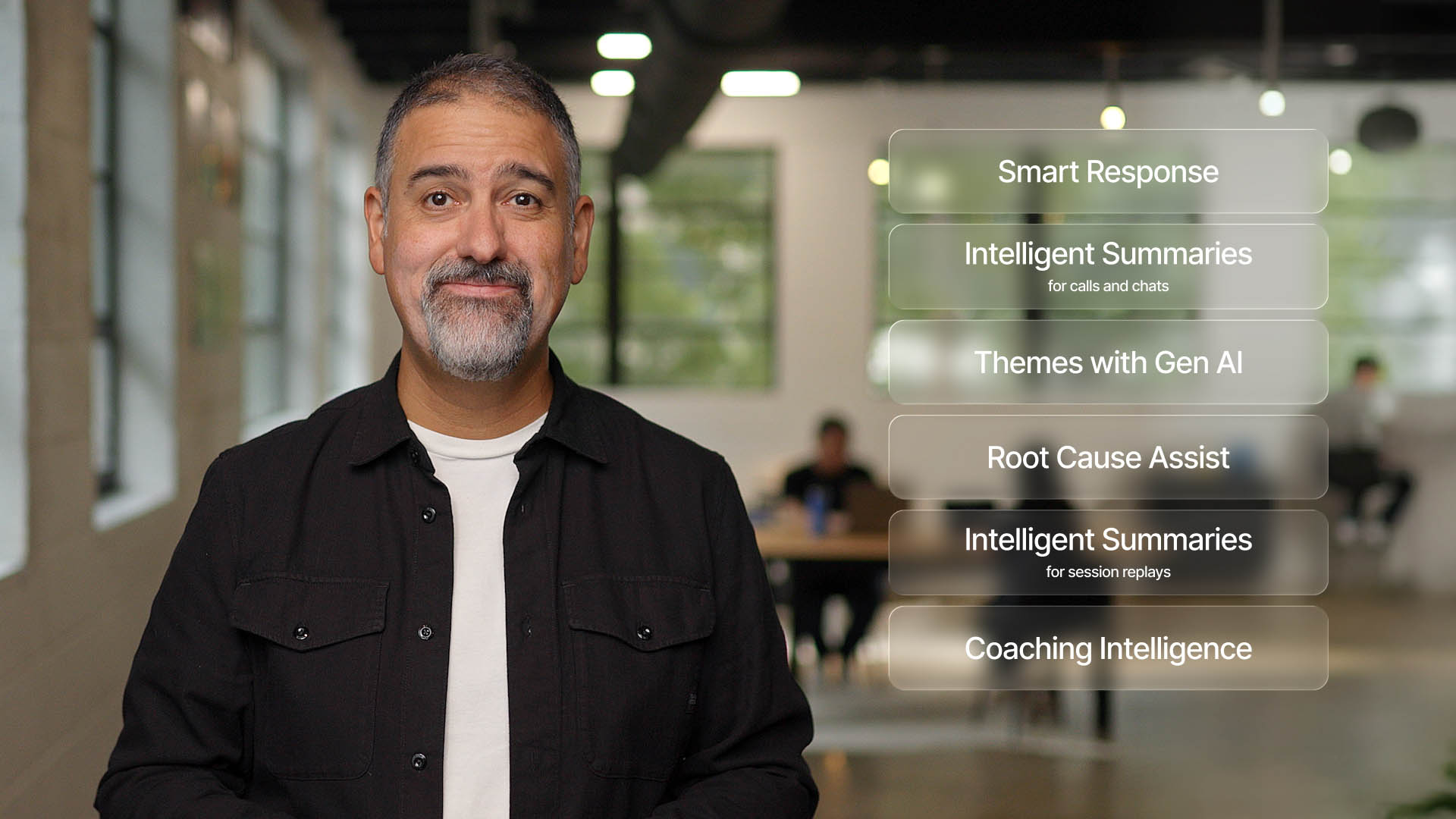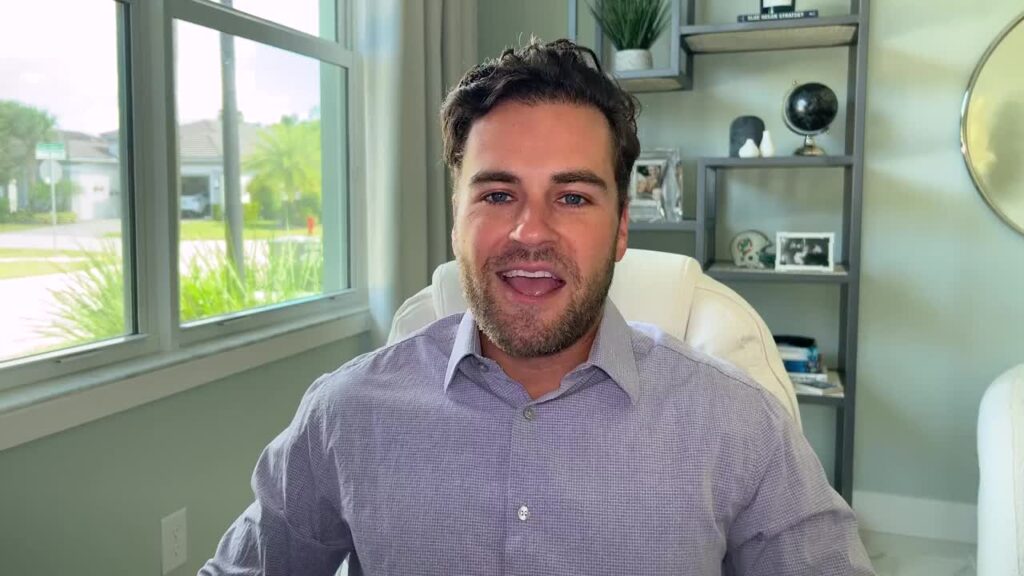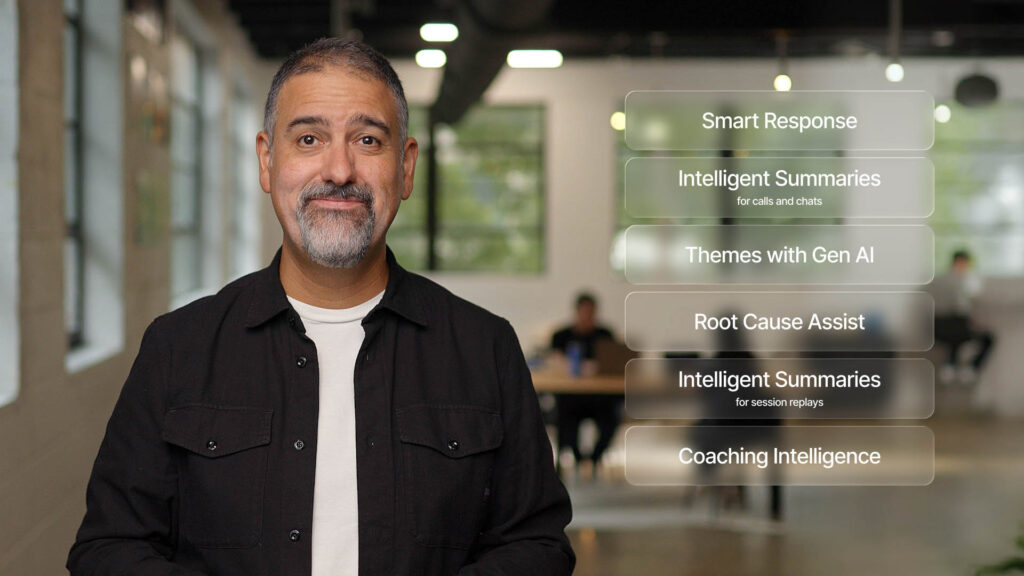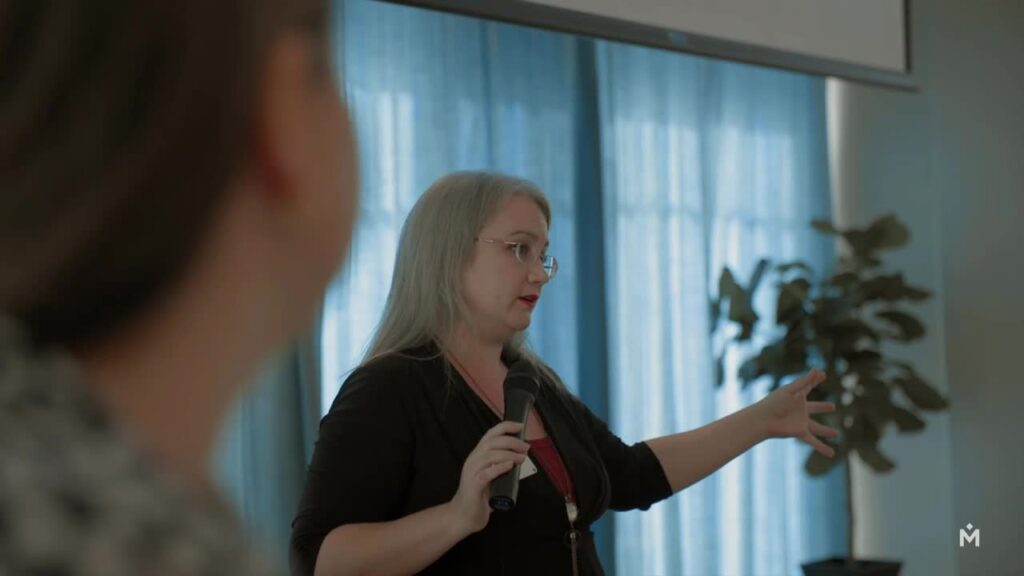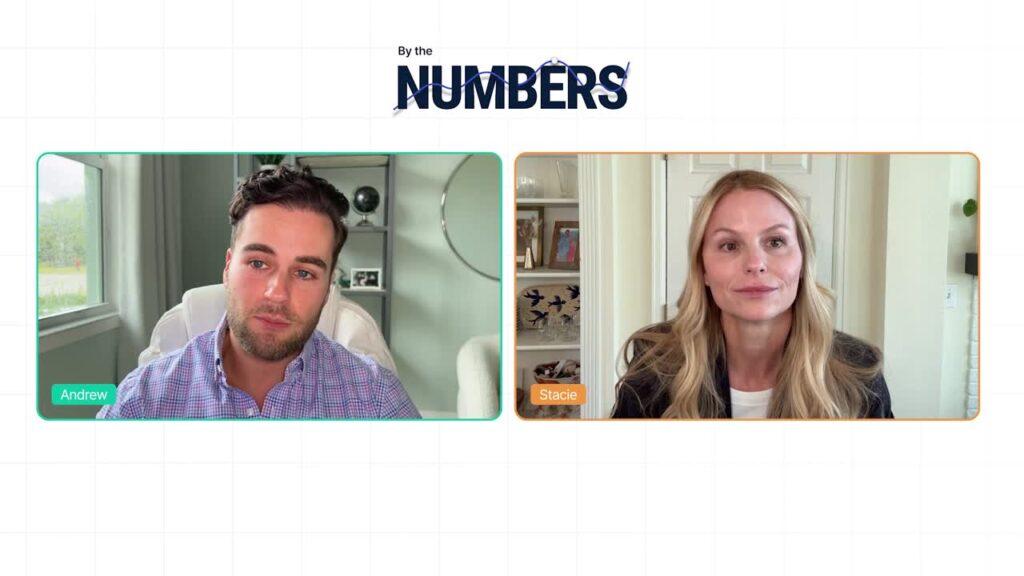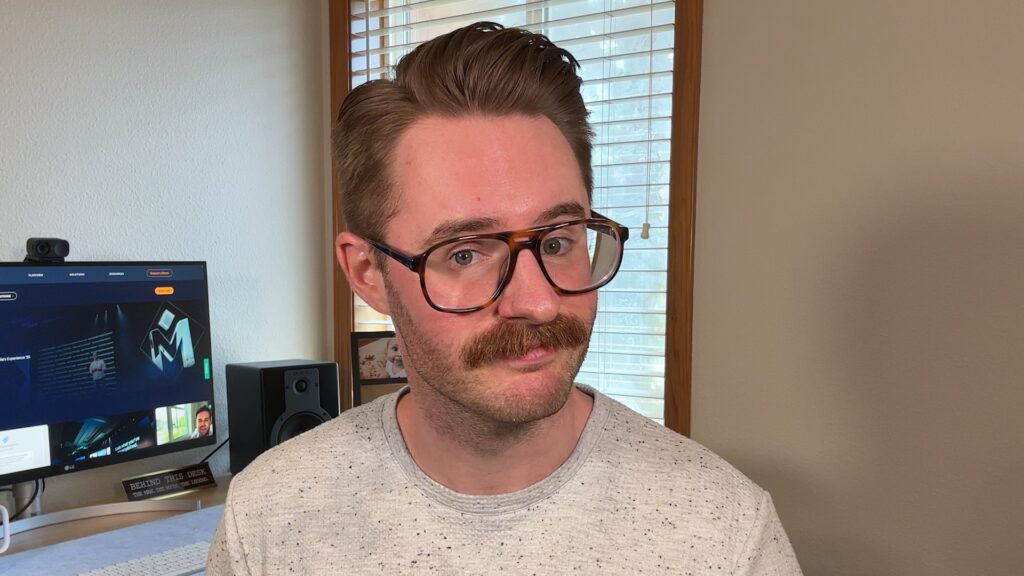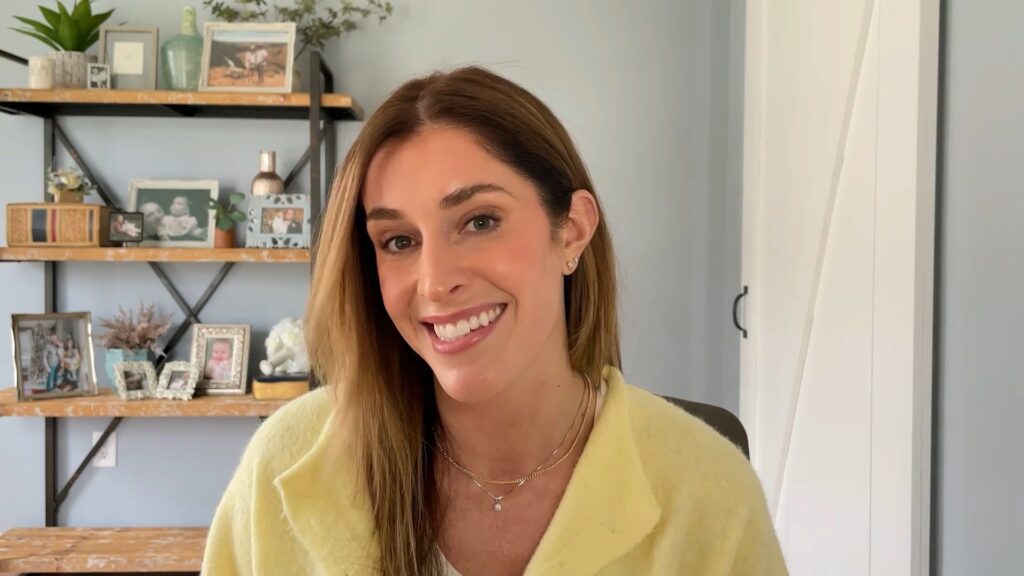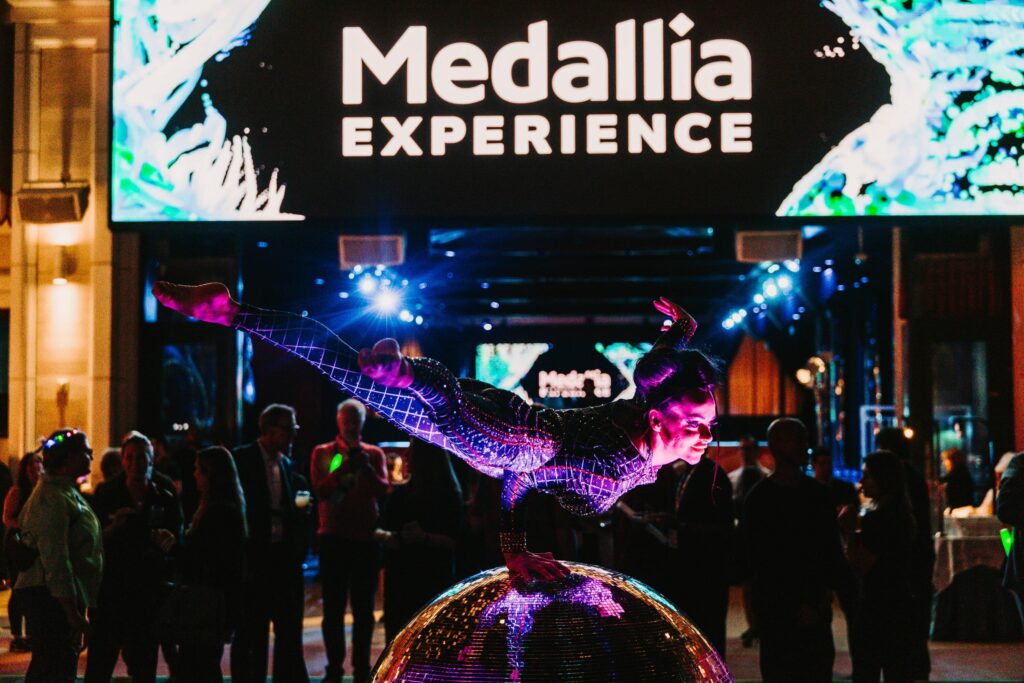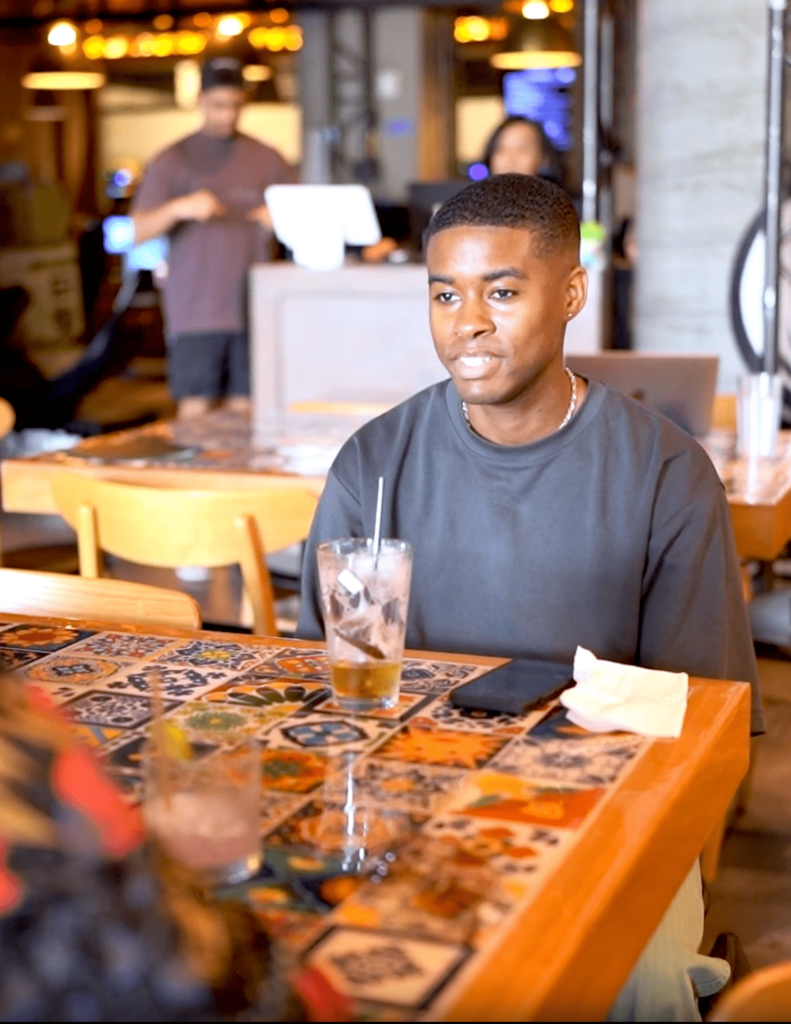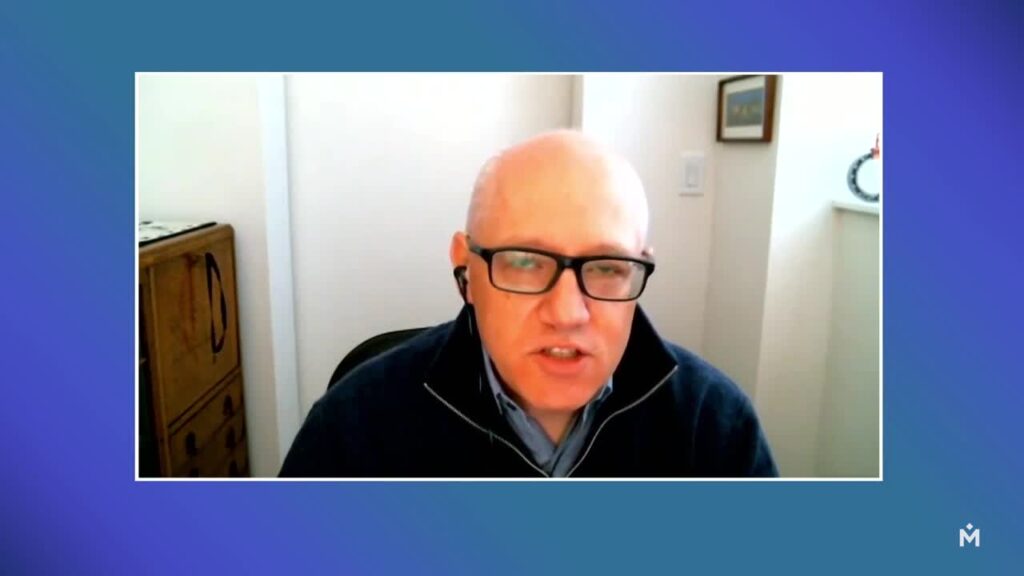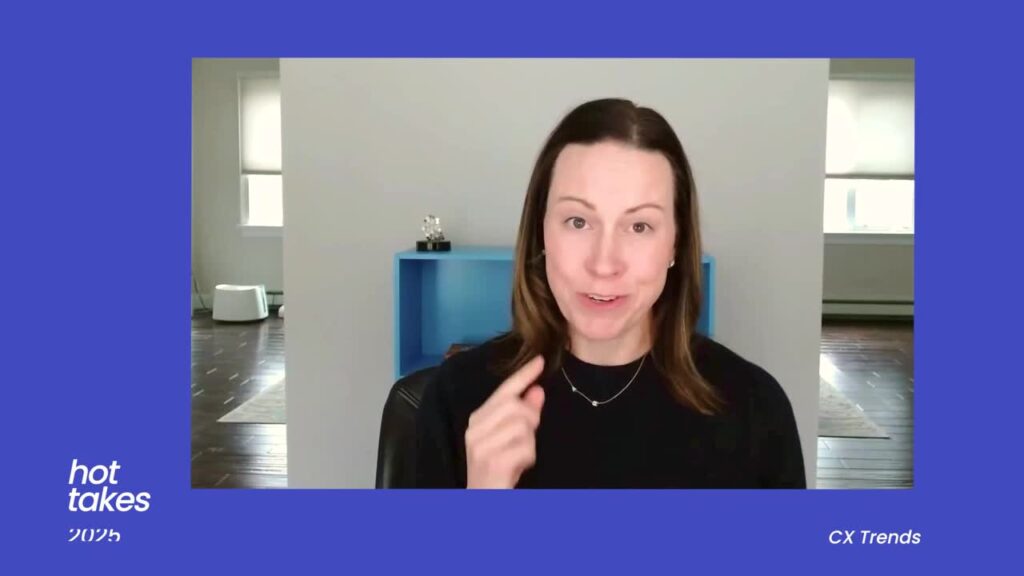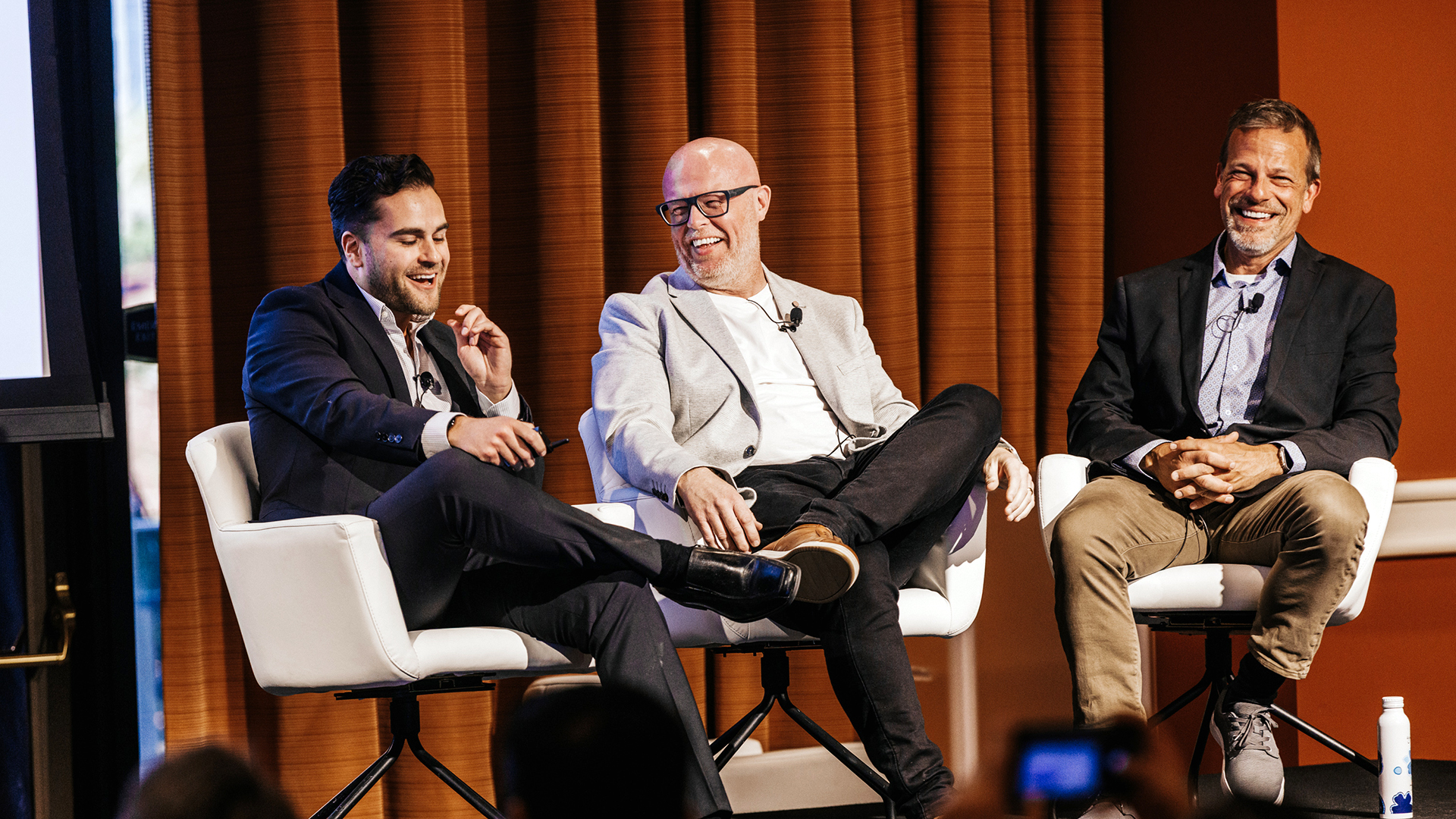Andrew Custage: [00:00:00] Thank you so much for joining us for our session locking in Loyalty, where we’re gonna be sharing some findings from joint Medallia and Ipsos Research. Just to kick things off, my name’s Andrew Custage. I have the privilege of heading up research insights here at Medallia. I focus on running studies with consumers and CX practitioners to understand their sentiments and their behaviors and.
Some of that data makes its way into white papers and reports and things like that that we released, that you may have seen on LinkedIn or on our website. Hi everybody. My name’s Jamie Thorpe. I’ll start with my standard apology. I am English. I apologize for that. There’s not all I can do about that.
Jamie Thorpe: I’m Chief Experience Officer at Ipsos. I need a better picture. I’m CXO at Ipsos and I’ve been in the industry for a long time and worked with Medallia very closely over a number of years. So really pleased to be bringing this research to life with
Mike Debnar: Andrew and Mike. Hey, Jamie. Hey, I’m Mike Denar. I’m, industry advisor. I focus on retail. I’ve been at Medallia for almost 10 years, and before that I was a customer and I’ve been in retail my whole life. I like to tell the story. My retail started off with my [00:01:00] parents having a garage sale when I was about five years old, and they gave me my own little table.
So anyway, really happy to be here to talk about loyalty.
Andrew Custage: In this session, we’re gonna talk a bit about some of the research that we’ve done recently, and we’ll focus on the topics of whether or not brands understand their own customer’s loyalty, and we’ll talk a little bit about loyalty operations and what some best in class practices might include.
We’ll talk a little bit about rewards programs and where they might fit in. And then we’ll talk a bit about maybe some of the biggest emerging trends in the field of loyalty too. And then hopefully there’ll be a little bit of time for some q and a as well. To kick us off, we’re gonna mainly focus on two reports that we’ve released recently.
The first is a Medallia report that is from the perspective of over 2000 consumers and their perceptions towards brands that they’ve transacted with recently and how loyalty plays into that picture. And then the more important of the two reports that we’ve actually just released is the one that we’ve done jointly with our friends at Ipsos, which features responses from over 800 CX practitioners to get their point of view about the opportunities and challenges they’re facing [00:02:00] in.
Trying to drive loyalty for their customers. And we’re talking about this for a few reasons. We share between the two companies a big passion for loyalty because there’s a lot at stake in this field for brand success. It’s surprising or maybe not surprising that an overwhelming proportion of CX practitioners would.
Agree that loyalty is an important part of their success. It’s crazy that you, any survey, Iran, you probably know it’s hard to get 97% of people to agree on something, but you’ve got really high percentages of people. That would also say things like loyalty initiatives drive a good return on investment.
Also, building customer loyalty is a more cost-effective strategy than acquiring new customers and setting the context for today. Another interesting thing is that most CX practitioners. Agree that loyalty’s only getting more important from here. We’re in a especially competitive marketplace across industries and driving retention and frequency and the many things from your existing customers versus finding white space with new customers is becoming an even more important
Mike Debnar: [00:03:00] area.
Yeah, and you know, we want to set the context too, because. Loyalty can mean a lot of things, but we look at it two axioms of loyalty. There’s like programmatic loyalty. We’re all aware of those. The rewards programs, they work really well and they have great desired outcomes. But what we’re talking about today, ma mainly is experiential loyalty.
It’s what we all do. It’s what I like to call the lion hearted kind of loyalty. So that’s the loyalty that we’re gonna talk about. There’s a balance between the two. But we have some really good data to show you how maybe you could potentially balance that. I’ve been doing a presentation called the Economics of Experience.
It’s kind of a new presentation and it really dives into this. I know a few of you have seen it in the audience. So we’re gonna, we’re gonna talk about those two axioms today. I. To
Jamie Thorpe: build on that, we think about loyalty. If you look at it through the customer experience lens, and actually it’s really interesting ’cause we thought we’ve got this piece on loyalty, we’re gonna be really unique at experience, and we found that there are four other tracks on loyalty.
So it’s really interesting to see that it’s coming back up as a more regular or popular topic. And when we look at customer [00:04:00] experience and we think, what does loyalty really mean? For us, it’s about how do you build strong relationships, genuine relationships that make you have a true connection with a brand that drives that loyalty.
And as, as as Mike said, it’s about the real engagement and the experiential part. Because what we are seeing is, well, as you can see on the screen here, the, the being memorable is really important. Okay. So we’ve talked about some of this was covered in various topics as and and talks as we’ve gone through, but.
What your brand stands for, how does that make you feel? How your employees are engaged and how they bring themselves to you and what that customer experience feels like. All of these different touch points and these different elements create a sense of loyalty within us that we then hopefully show and demonstrate through what we actually do.
But we’ve proven and, and it’s been seen many times that. When you are memorable for the right reasons, your connection with a brand and your loyalty, your share of wallet with those customers is, is eight times. So, you know, the reason why is always, you know, pound shillings and pence, or dollars and cents, however you [00:05:00] wanna look at it.
That’s the end game. And those connection points are driven by true customer experience and connectivity
Mike Debnar: and, and know it cuts both ways too. This whole idea of memorable could be a good. First experience, it could be a bad first experience, and we know about these two concepts of primacy and recency. So we know that customers and guests remember their first experience and their last experience.
Everything in the middle is a little murky. So we wanna make sure that we have first really good first experiences and obviously the recent experience make those memorable in a positive way. As Jamie mentioned.
Andrew Custage: So with that, let’s talk a little bit more about the state of being a CX practitioner and understanding loyalty within your own customer base.
Think about the last time you made a purchase from a company or an organization. Maybe think about the last time you were at home since this is an exception of being here, traveling this week, but last time you transacted before you left. Think of that company. How would you describe your feelings about them?
Were you loyal in any way, or would you say you had no loyalty at all [00:06:00] towards them? Down there at the bottom, you see how customers perceive loyalty towards the most recent brand that they interacted with. You can see though, there’s really this kind of continuum, right? There’s not loyal and unloyal or disloyal.
There’s. This gradient of slightly loyal, moderately loyal to very loyal. When we compare that to how organizations perceive their own customer base, it’s believed to be a little bit more binary. Brands seem to recognize this continuum to some extent, but they’re more inclined of anything to be pessimistic about the loyalty of their own customer base.
It’s, there’s an 11 point difference of more being more likely for a practitioner to believe that their customers aren’t loyal at all.
Mike Debnar: And what I like about this is customers are saying there’s an opportunity here. Right. So I look at this big blue space of 36%, and I’m thinking what an opportunity that is, because I’m sure that your brands measure what it means.
The delta between moderately loyal and very loyal customers usually have something to do with spend. So I think the opportunity here with the 36% is really important, and it reminds me of the business that we’re [00:07:00] all in. We might not all be in that loyalty business. We don’t think of ourselves that way.
But the business we’re all in is customer experience. And we all know that if we take a, a passive customer to a promoter, that we could tie the financial linkage to that. And if you haven’t had any of those presentations, I think Aviv Glick is gonna give one tomorrow on that financial linkage. And it’s, it’s profound.
It’s a lot of money that brands can acquire from their customers by taking them from moderately loyal to very loyal.
Andrew Custage: And I think something that’s interesting about this recognition that consumers have of where they fall along a gradient, but brands might see it as a little bit more of a binary and not recognize loyalty when it does exist, is there’s a gap on what consumers say it takes in terms of number of transactions to make them loyal.
Versus what practitioners believe 52% of customers say they’ve developed some feeling of loyalty towards their most recent brand after just one transaction. The first time they interacted. They’ve already got some hook to that relationship. When we ask [00:08:00] practitioners though what they think the number of transactions is that it takes to build loyalty among their own customer base, only 4% thought that it could be built after one transaction alone.
So. You’ve got this unbelievable gap and this missed opportunity potentially to start foster and cultivating on a relationship as early as. Customers are opening the door for you to have.
Jamie Thorpe: Yeah, and I think the two points I’ll just draw out on here, one is that disconnect between what practitioners see and think and what’s actually happening.
And that’s really interesting because to get that gauge so far out is, is fascinating. The other thing I would say is that this feeling of, of some loyalty, we’ve seen this change over the years and although we don’t have. You know, this data, if you like, from 5, 6, 7, 8, 9, 10 years ago, you can see that nowadays customers are much less forgiving.
They’re much more fickled, they’re much more transient in where they spend. So that moment of truth, that opportunity, that one interaction, and as Mike said, you remember that first one. You remember your last one, but you don’t sometimes get another opportunity. So how do we try to make [00:09:00] sure that we bring all of the, the data together, all of the active action together to make sure that when we get that moment, it, it really makes a difference for brands.
Andrew Custage: That fostering of loyalty can be built quickly as we’ve seen in the data, but it also can be eroded pretty quickly too, right? You’ve got majorities of customers that say things like, there’s at least one brand or company that I’ve dealt with in the past that I will never be a customer of again. I’ve had a bad experience and that’s it for me.
You’ve also a got a sizable percent that say it could only take one bad experience for me to be gone. And then I think probably the most powerful one on here too, is you’ve got a third of customers that say at least once in the past three months. I’ve left a brand that I used for years and I now have gone to a competitor instead.
We were doing a little bit of back of the envelope math before when we were chatting about this data. And if you extrapolate the global economy, consumer economy is something like 60 trillion a year. You think about how many brands customers interact with. It’s likely in the hundreds of billions of dollars, we were guessing somewhere around maybe four or $500 billion a year is lost [00:10:00] globally for brand switching.
And I think it just really illustrates this point of how quickly you can lose a customer, even if you could also build loyalty pretty early on too. I’m gonna go off script Andrews. All right,
Mike Debnar: let’s do it. So I surprise not unlike me. So, you know, I love economics and I mentioned this presentation. I’ve been putting together economics of experience and there’s an economist, his name is.
Albert Hirschman, he wrote this book called Exit Voice and Loyalty. Go take a look at that. It’s my first book, drop Exit Voice and Loyalty. And what Hirschman said, which we all know, is that when a customer or any, any, anybody a citizen has a bad experience that they have two active choices, they can exit or they can voice.
And so which one do you want them to do? Of course, we all are so grateful that some voice, because it gives management time to react. Gives management time to respond. But the other part of this is really interesting, the loyalty part of this, the loyalty is the commitment to the brand. We heard a little bit about that in the last session.
That’s a passive way. So loyalty’s like a safety net. If [00:11:00] I’m have a commitment to the brand, things can go wrong, but I will stick with you because I have faith that it will be resolved. So look up Albert Hirschman. You see a Wikipedia treatment on it, I think you’ll. You’ll be, you’ll make a connection to your career and to what you’re doing with that economist
Andrew Custage: for as far as what actually drives loyalty.
Now, if we, if we move on to what consumers and practitioners say, of course price matters, but what we found consistently is that product quality, and most importantly, everybody in this room, experience is a more likely driver of loyalty and. That’s not just what practitioners believe. Consumers themselves say that they have stronger feelings of loyalty towards brands because of experience than because of price.
Jamie Thorpe: I think we’ve all seen a, there was a stat a couple of years ago that talked about 86% of people will pay more for a better experience. It’s, it’s old now and it’s sort of. Commonly accepted, but we do see it. We all do it. We all look for an upgrade or look for a way if we’re gonna, you know, change the brand or see if there’s an opportunity to get a better experience.
So we see it. I think what’s really fascinating here is when you start [00:12:00] to bring this into real life examples. So we’ve done some research with an asset management firm and. Asset management, you think it’s all about performance of the fund? Right. And what we found actually in the research we’ve done with some massive, massive individuals and organizations is it was ease and value.
And the experience actually came out on top. Now don’t get me wrong, it wasn’t on top by that much. It was on top by that much. But the experience is what really was driving them. And they, they command a premium. Not just because of their fund return, because of the experience they deliver and what we are.
When we really think about what does experience mean in terms of where people put it in, in their priority, that’s how important we have to treat the data we’ve got and the action that we take on, on customers to make sure that we do it properly. Because what we’ve also seen is to Mike’s point there about, voice or exit where they voice, then that’s the second chance, right? Something’s gone wrong. You know, mark talked about it this morning. Things go wrong. Do something about it, act on it when they voice, that’s an opportunity to fix it. And what we’ve seen in research that we’ve done within [00:13:00] NIPS sauce is that I.
When you have a customer that’s going through a service experience in that second chance, maybe saloon, that, that might sorts out. If the customer feels like they’re putting more effort into fix an issue than the company does, then they’re three or four times more likely to defect. So this is the, the effort ratio between company and customers.
So it’s really just interesting to think through how important people place the experience when they voice, and then what you do with it from there. ’cause there are various stages that that go towards exit.
Andrew Custage: And I think, you know, you’ve talked in the past too a bit about this opportunity to define when, when a payment is made for a premium experience, there’s, there are elements of it.
I know you’ve thought a lot about different frameworks. Maybe you could share a little bit just about what exactly is this framework around what actually could make an experience out of the ordinary.
Jamie Thorpe: Yeah. Back to thinking about the point about being memorable. Thinking about building relationships.
When we talk about having a connection with brand and loyalty, a lot of it is around how strong the [00:14:00] relationship is, right? So we use the forces of cx, as you can see on the slide here as a framework to measure. We measure across sectors, across geographies, and we use this framework to drive engagement.
With brands and their customers, right? Because all of the research that we’ve done, and this has been peer reviewed within an inch of its life. So if you are going through a journey with a customer, there are essentially three stages of this. There are the hygiene factors, so the minimum viable experience.
These are the things no matter what I’m buying. No matter what service I’m interacting with, that I expect as a minimum, I expect fair treatment. I expect from if I’m buying something there to be a fair exchange of my time, my money, whatever it is that I’m engaging with, and then I expect certainty. So I expect that if I buy it, I’m gonna get it.
You guys are gonna deliver. I. So they’re minimal viable experience factors, hygiene factors. As you move through relationships and brands are more mature and more advanced in how they interact with customers, they start to move into the added value areas. So these are things where customers are saying, right, I’ve got that, that’s cool.
What [00:15:00] now? So now I want to feel in control of the situation because I don’t wanna buy a car or, or order a product and feel out of control. So. What is the organization doing to help me feel in control? This is things around communication or looking at apps or driving engagement with customers so that I feel control.
And the second of the added value forces is status. So. Actually, you know, and, and you know, in the US people are massive on status on airlines, right? You know, I see that all the time. I want to feel the airline’s a great example in the us. I wanna feel that I’m valued, I’m respected, I’m worthy of special treatment that takes me to the next level.
The interesting then point is as you then move through that maturity. What are the things that are really differentiating and the differentiating factors here is first is belonging, and we are seeing this more and more and more now. People now care about things that they didn’t care about before. They want to engage with brands who reflect or share their personal values, things around.
ESG, fair trade or gender pay gap or other major initiatives or major issues within an [00:16:00] organization. They want to feel that belonging or they want to feel part of a community. And then enjoyment is about how you actually make their lives easier. So all of this is a, is a journey. And what we do with organizations is we plot where you are against this.
Look at what best in class in sectors look like because follow these forces and this is how you get to drive stronger relationships, which which lead into the loyalty.
Andrew Custage: Well, I love this too because I feel like it’s recognition that having a wonderful experience isn’t as simple as just saying like, oh, I was treated really well.
Yeah, there are. There are more nuanced elements of it Absolutely. That I think really stand out. And I mean, I loved the keynote from Will before of giving several examples of just. Things that I’d never knew a restaurant thought they would even try to do, but they went across beyond a continuum of just giving away more stuff for free.
Like there were a couple elements of that, but there were certain other things that he spoke about too that I think this framework sits really nicely on. And I. It leads, well, I think into one other interesting finding for us from our data too, which is this idea that [00:17:00] the measurement of loyalty is evolving as well.
Right? We’ve seen that almost three quarters of CX practitioners say that the metrics used to measure customer loyalty have changed over time and some of the top ranking ones, but really stands out to me. I know there’s a lot listed on here and it might be. Hard to read all of them. The big takeaway, I think what we see often is that this definition or this way of actually quantifying the loyalty of a customer base goes beyond just transactional metrics, right?
It’s not just a, what is our repeat purchase rate? What is our time between transactions? What are the things that make somebody loyal? That’s synonymous was saying they’re just a high frequency customer. If you’re high frequency, you’re loyal. It’s more complicated than that. They might be high frequency with you, but also with your competitors at the same time.
It doesn’t mean they’re exclusively loyal to you. So I think it’s pleasing in many ways to see that practitioners are recognizing the role of many more experiential metrics that fall into. Their definition of loyalty too, like oat on here. But things are evolving too, like [00:18:00] customer participation rate, even social media engagement, advocacy or referrals and, and many other things that are adding to the mix beyond just transactional measures alone.
Jamie Thorpe: And apologies to anyone in the audience who works for an automotive brand, but we, we’ve got a great example of how we’re taking. Data on Medallia are beyond a single or a simple metric because believe it or not, sometimes customers don’t do what they say they’re gonna do. Right? This is not brand new. So what we’re doing is we’ve seen in auto where there’s a bit of maybe coercion where dealers try to get people to say, Hey, you bought that car.
If you, if you give us a high score, we’ll give you a tank of petrol or whatever it might be. What we’re doing with an auto brand in the UK now at a well known auto brand, is we are using. The sentiment analysis of what they’ve actually said in their verbatim comments. And we’re using it to either boost or reduce in the score.
And I think this is really, really cool because where we’ve getting video feedback as well, we’re able to see what people are thinking and, and feeling. So the, the hard and fast metrics are really important. Where we’re using that sentiment [00:19:00] analysis in the, in the verbatim comments, to really read what people are thinking and actually gonna do, I think is something that we’ll start to see more of because they don’t, the connection between what they’re scoring and what they’re saying isn’t always a reality.
So how do we get to the real sentiment of what customers are thinking and feeling?
Mike Debnar: We had our sales kickoff week and a half ago, and while I was there, I had a dream like, we should disrupt this business, like the act of measuring loyalty. Like I love, look, I love all these metrics, but these metrics aren’t gonna help you be specific to your brand.
I want something that’s specific to your brand because your brand has certain attributes that make your customers loyal, and we should measure those. I’ve looked across so many different customer instances of Medallia, and when I look at what is the number one attribute of experiential loyalty. What is the number one thing that drives customers to be loyal?
It’s employees and nothing is even close. So all of you that have Medallia and you have dashboards, and you have [00:20:00] an impact score, go look at your top five impact score and I guarantee your employee’s gonna be in there. If you’re executing well, some execute really well. So I’m, I’m gonna get in trouble for this because I haven’t vetted this with anybody, but seriously.
I have, I’ve invented because of the dream, the the MLQI know you’re dying to know what it means. The Medallia loyalty quotient. And what that does is measures your brand’s specific attributes of loyalty. And measures that, but you’re able to benchmark yourself across all kinds of brands. If you are the kind of person that wants to be on the cutting edge, I’m not saying this is that cutting, but if you’re a disruptor, please reach out to me.
I would love to pressure test this hypothesis on some real customers. So that, sorry, I’m going off script again, but I love it. I want to do this. Let’s disrupt trade trademark Mike Denar. Yes. Yeah, like that. And by the way, I’m done.[00:21:00]
Andrew Custage: So we’ll move on now and talk a little bit more about actual excellence in loyalty operations. One of the things that we found that I think is interesting too, is that when we asked respondents about the various tactics they have at their disposal, that they say Help drive loyalty for their organization.
There were a bunch of things we asked about of like, are you using personalized offers? Are you doing any sort of type of proactive engagement? What are you doing on social media? All these things or whatever. The number one thing that was said is that collecting customer feedback is this is the top driver.
This is the most commonly cited thing. Of course, it was CX practitioners that we were talking to, but I think it’s a cool reflection of just the role of insights and the voice of the customer and how inseparable it is to driving loyalty. But there is opportunity to do more with it too when we ask.
Respondents to talk a bit more about what they use that feedback for. I would say that a lot of things were more backward looking and there is more of an opportunity to be more real time. And that’s why I’m so excited about a lot of the product announcements that were made earlier today too, of features because we are entering this phase [00:22:00] where CX is moving away from a backward looking reflection on the business and the feedback is more ingrained directly with taking action and using other signals too.
And, and I was surprised it didn’t say acting.
Jamie Thorpe: Collecting
Andrew Custage: and acting customer feedback. ’cause you can blame me. I wrote the question, it’s my fault. That’s not
Jamie Thorpe: what I meant.
Andrew Custage: So, and some other stuff that we looked at too that I think is interesting from an operational perspective is this idea of brands looking at attributes.
Mike, you were talking a lot about this Medallia of loyalty quotient, or this idea of scoring across a variety of attributes that differentiate your brain from others. There are a lot of attributes that I think can stand out either as positives, but certainly negatives too. And when we asked respondents to talk about.
What stops them from being loyal to a brand? The things that basically erode loyalty the most, really things kind of fall across this quadrant of two axes. There’s things that happen often versus don’t happen very much, and within that there are some that don’t matter that much. They might be an annoyance, but they’re not going to cause a customer to abandon a brand.
[00:23:00] And then there are things that are highly damaging to the relationship. There’s a bunch on here. We’ve got some examples. It’s not inclusive of everything we ask, but things that are not common and not damaging, like some technical issues of like account login or an in-store experience that’s maybe loud or overcrowding, or there’s something with the atmosphere.
These are low stakes. When you start moving to things that are a little bit more common, but still not super damaging. You’ve got stuff like out of stocks, defective or missing products, delays, things that are a little bit more logistical in some cases. But when you start to move around and, and maybe worry a little bit more, you start to see things like there’s navigation difficulties, not just a technical glitch, but more of a cohesive problem with what you can access through a brand’s digital or in person properties.
Also this failure to recognize or appreciate the customer. And then some things like untrained or incompetent employees or on here, the thing that is actually extremely damaging, maybe not a surprise, is either incorrect or deceitful information provided and advertised. And in the top [00:24:00] quadrant you’ve got some really bad things.
So like. Frustrations over unreasonably, high prices being charged, rude employee interactions, and then poor product quality too. So a lot on here, it’s not encompassing of all possible attributes, but things that at least I think set the framework of how brands should be thinking about what to triage and solve for was definitely one of the bigger findings that came out of this too.
Mike Debnar: And you know, like I said, with Hershman’s model of exit voice and loyalty is that, that it’s a safety net. So even when things go wrong, you’ve got some time. ’cause you’ve got loyalty, equity. So you’ve got some time to resolve those things and some customers are very forgiving and provide a lot of grace and others don’t, but it gives management time to react.
One thing that I’ve known, you know back when I was in retail is that some problems are very difficult and very expensive to fix. So that’s always in play too. And the way that I attacked those was I said they were hard and expensive to fix, and that was a blocker, but it was that customers, you could use a customer voice as prioritization so you [00:25:00] could get attention.
Of your CFO, of your CEO saying, look, these are the things that is cau are causing the most damage. And I found that to be highly effective.
Andrew Custage: And I think you were talking before about the economics of loyalty and experience, but there’s, there’s definitely something to be said about not all problems are fixable right away.
And it’s true. There’s certainly, I mean, we don’t have up on here what the costs are to fix any of these problems. It’s just what the customer responses to it. But I think this idea of governance and this balanced approach of knowing what’s damaging and. What’s feasible to fix is a critical thing to implement if an organization doesn’t have it already.
As far as remedying problems, I think it’s especially important too from an economics perspective because the big finding that we’ve had out of our studies is this idea that it’s more cost effective to deliver good experiences from the get go than having to remedy a poor experience with. Somethings like discounts or free items or, or something like that.
And it does stand out as being among the most common ways to get a customer back if they’ve abandoned a brand too. [00:26:00] Some practitioners think that targeted marketing and more personalized comms might be a solution, but when we’ve asked consumers, the most common thing that they cite that got them back is a deal or a discount.
And the extent to which that’s gonna erode margin is so astronomical. Like I was saying before, it, it’s better to get it right from the get go.
Mike Debnar: So this idea of appeasement, right? It’s. That’s expensive. That’s an expensive way to fix a problem. But a lot of brands do that. And so there was one of our clients told me this story about shipping and charging for shipping in that the shipping process wasn’t going very well and customers were complaining, first of all, that they had to pay for shipping.
And secondly, that it wasn’t very good. So they were ended up refunding all this, you know, refunding a lot of shipping. And what they found out by looking through Medallia. Was that the real problem was just transparency and information about the process. They exposed that. Let’s say they let the customer in on here’s exactly what’s happening, and you’ve probably all experienced that.
Did you ever get you some retailers or, or companies you deal with? They said, Hey, your shipping tag has been printed. [00:27:00] Be like, wow, that’s good to know. Hey, it’s been picked up. Okay. I like that too. They’re not, it can’t be too much information and you’re paying, if you’re paying for it, you want that kind of transparency.
So their appeasement went from a pretty high number to almost zero, and it didn’t cost ’em hardly anything to fix other than just share information with the customer.
Andrew Custage: And one additional point on this topic too is I might go quick on this. For at least my part. ’cause Mike, I know you mentioned already too, but just this recognition and awareness of how much employee experience ties hand in hand with customer loyalty too.
A very large proportion of customers say they feel more loyal to brands when they can tell that their employees are treated well. And then fortunately, there does seem to be mutual recognition on the part of practitioners as well. Very high percent saying that managing our employees experiences has a direct impact on our organization’s Customer loyalty too.
Jamie, I think you got a, an interesting story about this one.
Jamie Thorpe: Yeah. I mean, first of all, the, the employee experience is critical and people talk about EX and CX and we’re seeing it, but I still think there’s a huge white space here and opportunity for people to bring it together properly. What was really [00:28:00] interesting in the story I wanted to share was that during Covid there was a a website that was entitled which Brands Should Have Your Money, and basically it was.
Assessing companies during that period on how well they treated their employees. And that’s really interesting because that notion of a customer caring how an employee is treated and therefore that should come back to the brand in loyalty and spend was fascinating that people actually went and did that.
So people do care about how employees are treated when you see. You know, these organizations that have zero hours contracts or they treat employees poorly, customers now care much more than they did in years gone by. So I think we can need to continue this focus on how ex and CX come together
Andrew Custage: and on the operational side is definitely worth mentioning.
One other big thing too, in the area of loyalty is that rewards programs obviously are commonly talked about with this too. Our main takeaway around loyalty programs is that one, they’re very prevalent. More than half of organizations that we ask, say they have some sort of loyalty or rewards program.
And it’s interesting because these programs obviously [00:29:00] have the theory behind them that they’re going to drive incremental spend or transactions because customers want rewards, they want to earn them. It may or may not be true, it might vary by brand, but one thing that loyalty programs definitely do offer is the opportunity to provide differentiated service and the majority of.
Brands that use these programs do do that. Another thing that’s really important about it is the opportunity to have a captive audience to collect customer data and feedback from. And you see a very large proportion of brands that have loyalty programs doing so. It’s nearly nine in 10. And it also opens the door when you have that data to do things like more proactive engagement to assess churn risk or try to combat it and do personalized offers because once again, program membership gives you the data to actually fuel the engine that is gonna run a lot of these types of initiatives.
But what our finding, I think is, is pretty interesting about loyalty is that when we’ve asked brands that have a program versus those that don’t, they seem to be pretty confident that it’s a big driver in their loyalty. There’s a 21 [00:30:00] point gap between them and orgs that don’t have a program on whether they believe they’re.
Performing better than their customers in the area of loyalty if they have a program. But something definitely surprising from our research is this finding that they don’t really differ in believing how loyal their customer base actually is. So it’s kind of paradoxical, right? If you have the program, you probably, if you believe it’s working, should think your customer base is more loyal.
But I think what it reveals is just this idea that. Programs can play a very big role, but they’re not the only way to drive loyalty. And Mike, I think you had mentioned a stat too about just the brands that rank the highest in CX and their relationship with programs. Just to paraphrase for the sake of time, like there isn’t necessarily a relationship, so I think it’s just the takeaway that.
If it works for your brand, that’s great. The program obviously has benefit, but not having a program doesn’t necessarily put you at a disadvantage either. So about three quarters of CX practitioners say that their investment is going to be higher. I guess it’s understanding because the next frontier of competition is going to be pretty intense in the field of loyalty too.
A lot of [00:31:00] CX practitioners are citing that it’s really hard to consistently deliver the brand promise, especially across channels, how much more omnichannel we are now. This is definitely a challenge, and also one of the big areas too, is something around this distinct strategy for generations that’s needed.
I thought this was one of the coolest stats in the report, is this high proportion of practitioners that are saying, you need to have a different approach for Gen Z than you do for other generations. You think about their channel use. You think about some of the things that Jamie mentioned of this attraction towards brands that share social values or other economic concerns.
There are many things that make Gen Z different and responding to that I think is a big deal too. And another one, just lastly on here for this page, is the big elephant in the room, which is ai, right? We’ve been talking a lot about AI ourselves. You heard a lot earlier today about it, but we do have nearly half of CX practitioners that are saying they’re already using ai.
To drive loyalty initiatives. And another 30% say they plan to, but they just haven’t gotten going yet. So we also see [00:32:00] from our studies that higher growth organizations are more likely to already have adopted it. And yeah, I mean, it’s definitely something big here. I know that was a lot from me for just a second, but any reactions
Jamie Thorpe: from either of you?
Yeah, I, I just quickly on the on the use of ai, one thing that we, found fascinating. As I was talking to someone recently who was saying that when you think about the people who are making decisions on where to where to put ai, they’re normally older, more senior people who’ve been through the journey of very traditional service.
And then you’ve got the next generation of people who’ve only been through push down automated channels and engagements. So these people are saying, make everything automated and, and AI and digital and these people saying, but we wanna speak to a person. So I think that, I thought that was really fascinating in the conversation we had recently.
So I would just be. You know, where everyone’s wary of ai, right? I’m not knocking it. It’s brilliant, you know, et cetera. But just there’s not always really obvious how it might come together. And again, some research we did recently showed that there was a report from the backend of last year said that 57% of of people asked thought that the companies were the people that were gonna benefit the most from the AI.[00:33:00]
Not the consumers. So it’s all in the mix. And one thinking about, but when, just think, I would just give some thought to those, making the decisions and what the, the next gen actually want and how it’s being used and whose benefit it’s being used for. So just some, you know, food for thought.
Andrew Custage: And I think it brings up definitely something interesting too around this idea of technology complexity.
We see a majority of CX practitioners say they struggle to properly integrate technologies that play a role in customer loyalty. And when you think about the many different types of texts that can go into this, there’s a a bunch on here, but you know, you’ve got your CRM system, you’ve got your customer experience platform, you’ve got a loyalty rewards management program, all social media, digital experience, analytics.
It really does take enterprise grade skill to integrate all of these things. And I think. I don’t know, Mike, if you have a thought of just the, the, the pitfall of maybe underestimating the complexity that does exist in winning and loyalty right now?
Mike Debnar: Yeah, I mean, I think it’s a dichotomy because you know, when you look at, so I mean digital by [00:34:00] definition is ones and zeros.
I mean, theoretically you can manipulate it, manage it to the way you want it. I think the hard part of loyalty is the analog side and the main component of that are people. Hmm. We, some of us wake up on the wrong side of the bed. We don’t provide the service that we’re capable of doing. There’s a lot of unknowns on the analog side.
So I look at it as the systems. Yes, they’re maybe difficult to integrate, but I look at the systems are a lot easier than the people part of this. Thus, I really a proponent of ex and understanding and motivating and activating employees ’cause they are your best. Weapon in the loyalty future. I think they are.
Andrew Custage: Great. Well that makes up all of our findings. I’ve got a few recaps to just noodle on for a minute, but yeah, I think we’ve got maybe five minutes or so if we wanna take a couple questions.
Mike Debnar: I’ve got a question for you real quick, because every report, he does great research. I’m telling you, one of the best guys I’ve ever seen or any person doing research, and you always have a [00:35:00] slide, something around generational differences.
Would you do a whole research project on generational cx? I think that would be great. We all need to understand the differences that these different generations expect of brands and their customer experience. I. I’ll be looking for a commitment on that.
Andrew Custage: My, my, my boss that that sets the content agenda for Medallia.
Will, will hear your request for sure. So that’s a good answer. I’ll be advocating for it as well. But if anybody knows Eric, I think he’s in the room. We’ll, we’ll talk after.
Hi. I was curious, you know, from your perspective with all this great research for those of us who wanna take this and bring it back to our peers and really socializing it, especially amongst the leaders in our organization.
You know, how do you recommend that we go about just making sure that this stays as part of that conversation and making sure that it’s, you know, top of mind beyond, you know, these annual visits for us.
Andrew Custage: She wasn’t a plant, but that was the perfect segue to these reports are available, they’re public.
Definitely. If you aren’t [00:36:00] following us on LinkedIn you know, follow both Mi Ipsos and Medallia for sure. If you aren’t following us on LinkedIn, if you aren’t checking our resource page on medallia.com, if you aren’t talking with your Medallia counterparts who have access to these materials too, definitely get it.
’cause we do put out a lot of research. And yeah, I mean, as far as socializing within your organization we’re here to help. But I think, I think definitely something about these two reports is one, we have an excellent creative team, and I think the, the charts and everything are really digestible.
A stat can mean one thing for one brand and a completely different thing for another brand too. So. Contextualizing the insight for your organization, I think is absolutely key. And selecting the right pieces that are impor appropriate for your stakeholders. As you know, a 40 50 page report might not be everything that’s that pertinent, but maybe there’s five stats that really are gonna make a difference.
But, but
Jamie Thorpe: when you break it down, what, what does loyalty mean to you and your business? Have you drawn a connection between your, your experience performance and your financial performance, and then keeping that. In your [00:37:00] roadmap in terms of how do you track towards it, is really, the stats are fantastic obviously, but like Andrew says, what does it mean for you and how do you drive change in your business?
And when you go through these reports, there might be a few things you might wanna add an ask now question into your, your survey. You might wanna do some agile research to dig into it, but just keeping it on the roadmap just keeps it front of mind.
Hi, I am looking to disrupt some of our metrics and I’m so interested in some of that conversation, but.
The memorability piece that you started off with is really fascinating to me for my brand. Is that something anybody measures? Is that a question on a survey that anybody’s using or is there any way to measure that?
Jamie Thorpe: When you look at the forces and you think, think of it as a graphic equalizer, shown my age there, but think of it as you can’t, and all of these things, they go up and down.
How memorable, you know, is normally brand. People will look at it through recollection of the brand when you ask about those sorts of things. But really I would look at it through the experience lens and say, how good are we? At, at these things and then ask, you could start to think about looking at transaction value.
You could think about how frequently they buy. So I dunno what your industry is, but if there is a [00:38:00] frequency there, those actions of what people actually customers actually do will give you an indication of how memorable you are. But no, it’s not a single question and I’m not gonna dream up a new metric ’cause that would be weird.
But so but I, you know, it is the kind of thing you could,
you could, you could build in. So you guys actually touched on something that keeps me up at night and it’s obviously you have your customers that will voice their opinion and let you know, we love those guys. But have you guys tried, ever tried to study or understand the people who don’t and like that’s the relationship between those, that voice and then those that don’t voice?
Jamie Thorpe: Yeah, that’s a great question. I mean, it’s interesting because it was in one of the charts here around. Lapsed customers or what we, you know, call the silent majority, those people in the middle, we are using the, the CX programs to really activate and reach those people. ’cause you’re right, those, those, those customers sometimes that shout loudly, maybe they’re not customers you actually want, you know, we’ve done this with customers with clients.
Is there a return on, on those customers, the ones that sometimes are [00:39:00] quiet in the middle or they’ve lapsed? That’s an opportunity to think about why have they lapsed and how do you make contact? And that’s where I’ve talked about the collecting customer feedback. Priority that came out. I think the still thing that we’ve been talking about this for years, but CX professionals still need to be much more active when it comes to how do we reach out to customers?
How do we engage customers and start to look at predictive analytics to say, customers that have gone quiet and then do this, and then do this. Typically then. Defect. It’s all in the data. How do you get to that, that silent majority in the middle and make sure that they don’t defect?
Andrew Custage: And I think a couple things too is we’re recognizing more and more that passive signals are very important and you can’t rely only on active feedback.
So things like digital experience, analytics, user sessions on webs and app, and. Those types of things I think are gonna reveal a lot because it, it didn’t ask of anything necessarily of the consumer in order for it to be collected. So you can get a lot more of a representative view of all consumers and not just the most vocal ones.
But also on the point of vocal feedback, I think using external panels beyond just your own [00:40:00] customer base, but running research to understand what the market’s customers are willing to say as opposed to just your most loyal brand advocates that are willing to talk to you is another way to get a much more representative view of your brand perception and where there might be issues.
Good question.
Mike Debnar: I think too if, if you’re in the business that has a product that’s connected to the internet. There’s a real opportunity to use that utilization data and correlate it to people that give feedback. Once upon a time, I was talking to a big computer company that makes phones. You can guess which one, and I, and I told her, she, she’s great early on into NPS and customer feedback.
And I said, why don’t we just give every phone and NPS based on. What we know drives score higher, like an impact score and then the utilization of those features. So, or you could do that with, I also pitched that to Ford and GM automobiles. So I think it, where it’s connected, we can understand more about that experience.
I. Even if they don’t give feedback.
Andrew Custage: Well, I think that’s all the time we have and we definitely don’t want to [00:41:00] get in the way of networking or snacks or whatever’s coming up. But thank you so much for attending. If you have any other questions we’re around and you can check out Ipsos at their booth in the expo hall as well.
Thank you so much everybody.
